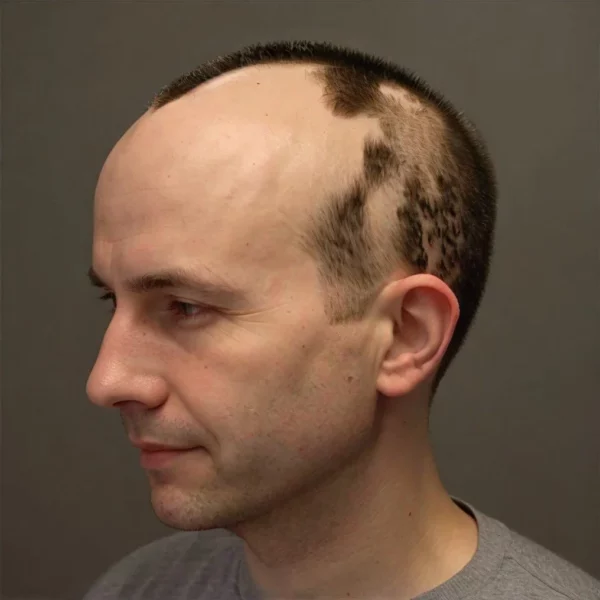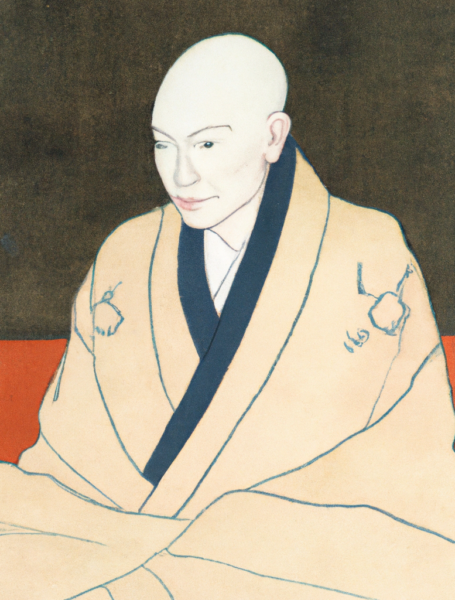Alopecia areata (AA) is a prevalent autoimmune condition, characterized by non-scarring hair loss. Many studies have been done on the epidemiology of this disorder, which offer insights into its global incidence, familial patterns, gender distribution, age and body site involvement, and related comorbidities. Understanding the epidemiology of alopecia areata is useful for developing effective treatment strategies and healthcare planning. This article aims to provide a detailed examination of these aspects, based on the data presented so far.
Alopecia Areata Incidence and Prevalence Trends: In the largest epidemiology study published to date, Mirzoyev and colleagues analyzed data from 1990 to 2009, and estimated the incidence of AA at 20.9 per 100,000 person-years. From this they calculated that any individual has a lifetime risk of 2.1%; that means 2.1% of people will experience at least one episode of alopecia areata at some point in their lives. This study revealed a near-linear increase in cumulative AA incidence with age, suggesting first onset of AA is fairly equally spread out along the age curve. An earlier investigation by Safavi and colleagues reported a slightly lower incidence (20.2 per 100,000 person-years) and lifetime incidence (1.7%) using data from 1975 to 1989. In a separate study, Safavi calculated the prevalence of AA in the general population to be between 0.1% to 0.2% at any single point in time, based on a survey conducted between 1971 and 1974. The Mirzoyev and Safavi investigations were all done in Olmsted County, Minnesota, USA. As the newer study suggests a slightly higher rate of AA in the general population, there is some debate as to whether AA is becoming more common. However, even though the investigations were quite large, it is difficult to say with confidence that AA is more common today than it was 30 years ago. More studies are needed from other locations in the USA and beyond before drawing any conclusions.
Hospital-based studies are less accurate, and involve fewer people, but they do allow us to look at what is going on elsewhere in the world. These assessments have reported life-time incidences of alopecia areata anywhere between 0.57% and 3.8%. A noteworthy prevalence of 2.45% was reported in Japan, indicating there may be significant geographical variations in AA incidence. In Europe the rate seems to be around 2% with small variations from country to country. In the USA, AA accounts for approximately 25% of dermatology clinic visits for all types of alopecia; which amounts to an estimated 2.4 million doctor office visits annually.
Gender Distribution of Alopecia Areata: The Olmsted County studies showed no significant overall gender difference in AA incidence between men and women. However, hospital-based studies worldwide indicate a female predominance, with female-to-male ratios ranging from 2.6:1 to 1.2:1 in different investigations. Conversely, there are a few studies that report a male predominance. Pediatric studies also generally show a male predominance, with some variations in severity between genders. When looking at many different studies, it seems that, while overall the ratio of men to women affected is about the same, males tend to develop AA at a younger age, and women a few years later on average.
These discrepancies may be attributed to genetic, hormonal, or environmental factors, though it must be said that there is no direct evidence to link differences in AA prevalence to any specific factor. The genes of a population don’t change much – even with many generations. However, the difference in gene activity from XY (male) versus XX (female) chromosomes might explain why there seems to be some subtle differences in the age of onset between men and women. Related to this, the increase in hormones in teenage years could have an impact on activating AA onset. Estrogens are known to increase immune cell activity and this might account for the apparent increase in women experiencing first alopecia areata onset in their late teens and twenties. The environment could also play a role. As we get older we are cumulatively more exposed to viruses, toxins, allergens, and other things that can non-specifically stimulate the immune system. This exposure might inadvertently trigger AA in genetically susceptible people.
Age and Body Site Distribution of Alopecia Areata: Overall, AA predominantly affects younger age groups, with the largest age group presenting at dermatology clinics for diagnosis and treatment being 21–40 years old. The mean age of first onset of alopecia areata ranges from 25 to 36 years, with variations reported based on gender (as above) and geographic location. The scalp is the most common site of involvement, often accompanied by involvement of other body sites such as eyebrows, eyelashes, and beard.
In patients with alopecia areata (AA), the occurrence of hair loss varies in terms of location and severity, influenced by age and gender. Notably, the most common site of hair loss is the occipital (at the back between the ears) region of the scalp, with 38.4% of male and 33.4% of female patients affected. The initial presentation of AA often involves patchy hair loss. Among adults, 58% exhibit this pattern, with the hair loss affecting less than half of the scalp. In contrast, children more commonly experience mild to moderate hair loss, with 80% to 85% having less than half of their scalp affected.
A significant factor in the extent of hair loss is the age at which AA first appears. Early onset, particularly in the first two decades of life, is frequently associated with more extensive and more persistent forms of alopecia. Conversely, a later age of onset generally corresponds to less extensive hair loss. Severe forms of AA, specifically alopecia totalis and universalis, where complete scalp or body hair loss occurs, are observed in 7% of all AA cases.
Differences with Ethnicity: Until quite recently, studies looking at AA were mostly done on Caucasian people in the USA and Europe. Since 2020 though, a few studies have looked at the risk of developing AA in different ethnic groups. Compared to White/Caucasians, the risk of developing AA seems to be higher in Asian people – at least for those living in the USA – with between 2 to 3 times the risk rate. The risk rate is also slightly higher for Hispanics/Latinos and Black/African American people somewhere between 1.2 to 1.5 times higher. Studies suggest that there is a stronger association of AA with rheumatoid arthritis, as well as a stronger prevalence of atopic disease, in Hispanic/Latino people. The most common autoimmune comorbidity in Black patients is thyroid disease. The rate of extensive alopecia areata (alopecia totalis or alopecia universalis) seems to be similar in all ethnicities at around about 7% of people affected by AA.
Family History and Alopecia Areata: The familial occurrence of AA varies considerably, with 0% to 21.8% of patients reporting a family history of the condition in different studies. This variation is more pronounced in children, where familial history rates are between 10% and 51.6%. Interestingly, one study found males more likely to have a familial history of alopecia areata than females. According to one study from Germany that looked at family history in detail, the frequency of AA was highest among parents (7.4%), followed by siblings (5.5%), and then children (2.3%) of a patient with AA. To some extent, these numbers reflect the differing average ages of these groups, not just the risk rate of developing AA. Among second-degree relatives, nephews and nieces showed the highest frequency of AA (1.7%), followed by grandparents (1.5%), and aunts and uncles (1.4%). After doing some calculations, the research authors suggested that the lifetime risk for developing alopecia areata was higher in first-degree relatives, with the highest risk observed in parents (7.8%). The risk of development in children with a parent that has AA was estimated at 5.7%. It’s important to note that this figure includes mildly affected cases, and the recurrence risk for more severe cases of AA is expected to be lower.
Conclusion: The epidemiology of alopecia areata is complex and multifaceted, with variations in incidence and prevalence across different regions and populations. The condition has a significant psychological and quality-of-life impact on patients, often associated with other autoimmune and psychiatric comorbidities. Understanding these epidemiological patterns is crucial for developing targeted interventions and improving patient outcomes. Further research is needed to unravel the underlying genetic and environmental factors contributing to the disease’s etiology and progression.
Bibliography
11711645 {11711645:A4BB9CDM},{11711645:S7PGQSN8},{11711645:C5VRJK7U},{11711645:KH2C67BI},{11711645:TM8MH9KB},{11711645:DX5DXV54},{11711645:EJTGRW8K},{11711645:Q4MW88P9},{11711645:5JHIS4IB},{11711645:8DMRBCHM},{11711645:H4FDZHGD},{11711645:NS5VMFTQ},{11711645:ICPH2QN9},{11711645:9MESNFGP},{11711645:DPBQ3WQZ},{11711645:274QT98E},{11711645:AMQM5RQP},{11711645:4RPIIXSH},{11711645:WXWD3ATA},{11711645:VADIIBIJ},{11711645:MB58T8NU},{11711645:UDNB6TTA},{11711645:KMR37IPX},{11711645:26RTRQEW} 1 vancouver 50 date asc 1126 https://www.keratin.com/wp-content/plugins/zotpress/ %7B%22status%22%3A%22success%22%2C%22updateneeded%22%3Afalse%2C%22instance%22%3Afalse%2C%22meta%22%3A%7B%22request_last%22%3A0%2C%22request_next%22%3A0%2C%22used_cache%22%3Atrue%7D%2C%22data%22%3A%5B%7B%22key%22%3A%2226RTRQEW%22%2C%22library%22%3A%7B%22id%22%3A11711645%7D%2C%22meta%22%3A%7B%22creatorSummary%22%3A%22Safavi%22%2C%22parsedDate%22%3A%221992-05%22%2C%22numChildren%22%3A0%7D%2C%22bib%22%3A%22%3Cdiv%20class%3D%5C%22csl-bib-body%5C%22%20style%3D%5C%22line-height%3A%201.35%3B%20%5C%22%3E%5Cn%20%20%3Cdiv%20class%3D%5C%22csl-entry%5C%22%20style%3D%5C%22clear%3A%20left%3B%20%5C%22%3E%5Cn%20%20%20%20%3Cdiv%20class%3D%5C%22csl-left-margin%5C%22%20style%3D%5C%22float%3A%20left%3B%20padding-right%3A%200.5em%3B%20text-align%3A%20right%3B%20width%3A%201em%3B%5C%22%3E1.%3C%5C%2Fdiv%3E%3Cdiv%20class%3D%5C%22csl-right-inline%5C%22%20style%3D%5C%22margin%3A%200%20.4em%200%201.5em%3B%5C%22%3ESafavi%20K.%20Prevalence%20of%20alopecia%20areata%20in%20the%20First%20National%20Health%20and%20Nutrition%20Examination%20Survey.%20Arch%20Dermatol.%201992%20May%3B128%285%29%3A702.%3C%5C%2Fdiv%3E%5Cn%20%20%20%3C%5C%2Fdiv%3E%5Cn%3C%5C%2Fdiv%3E%22%2C%22data%22%3A%7B%22itemType%22%3A%22journalArticle%22%2C%22title%22%3A%22Prevalence%20of%20alopecia%20areata%20in%20the%20First%20National%20Health%20and%20Nutrition%20Examination%20Survey%22%2C%22creators%22%3A%5B%7B%22creatorType%22%3A%22author%22%2C%22firstName%22%3A%22K.%22%2C%22lastName%22%3A%22Safavi%22%7D%5D%2C%22abstractNote%22%3A%22%22%2C%22date%22%3A%221992-05%22%2C%22language%22%3A%22eng%22%2C%22DOI%22%3A%2210.1001%5C%2Farchderm.1992.01680150136027%22%2C%22ISSN%22%3A%220003-987X%22%2C%22url%22%3A%22%22%2C%22collections%22%3A%5B%22Q3FDJAU6%22%5D%2C%22dateModified%22%3A%222024-01-31T15%3A37%3A50Z%22%7D%7D%2C%7B%22key%22%3A%224RPIIXSH%22%2C%22library%22%3A%7B%22id%22%3A11711645%7D%2C%22meta%22%3A%7B%22creatorSummary%22%3A%22Safavi%20et%20al.%22%2C%22parsedDate%22%3A%221995-07%22%2C%22numChildren%22%3A0%7D%2C%22bib%22%3A%22%3Cdiv%20class%3D%5C%22csl-bib-body%5C%22%20style%3D%5C%22line-height%3A%201.35%3B%20%5C%22%3E%5Cn%20%20%3Cdiv%20class%3D%5C%22csl-entry%5C%22%20style%3D%5C%22clear%3A%20left%3B%20%5C%22%3E%5Cn%20%20%20%20%3Cdiv%20class%3D%5C%22csl-left-margin%5C%22%20style%3D%5C%22float%3A%20left%3B%20padding-right%3A%200.5em%3B%20text-align%3A%20right%3B%20width%3A%201em%3B%5C%22%3E1.%3C%5C%2Fdiv%3E%3Cdiv%20class%3D%5C%22csl-right-inline%5C%22%20style%3D%5C%22margin%3A%200%20.4em%200%201.5em%3B%5C%22%3ESafavi%20KH%2C%20Muller%20SA%2C%20Suman%20VJ%2C%20Moshell%20AN%2C%20Melton%20LJ.%20Incidence%20of%20alopecia%20areata%20in%20Olmsted%20County%2C%20Minnesota%2C%201975%20through%201989.%20Mayo%20Clin%20Proc.%201995%20Jul%3B70%287%29%3A628%26%23x2013%3B33.%3C%5C%2Fdiv%3E%5Cn%20%20%20%3C%5C%2Fdiv%3E%5Cn%3C%5C%2Fdiv%3E%22%2C%22data%22%3A%7B%22itemType%22%3A%22journalArticle%22%2C%22title%22%3A%22Incidence%20of%20alopecia%20areata%20in%20Olmsted%20County%2C%20Minnesota%2C%201975%20through%201989%22%2C%22creators%22%3A%5B%7B%22creatorType%22%3A%22author%22%2C%22firstName%22%3A%22K.%20H.%22%2C%22lastName%22%3A%22Safavi%22%7D%2C%7B%22creatorType%22%3A%22author%22%2C%22firstName%22%3A%22S.%20A.%22%2C%22lastName%22%3A%22Muller%22%7D%2C%7B%22creatorType%22%3A%22author%22%2C%22firstName%22%3A%22V.%20J.%22%2C%22lastName%22%3A%22Suman%22%7D%2C%7B%22creatorType%22%3A%22author%22%2C%22firstName%22%3A%22A.%20N.%22%2C%22lastName%22%3A%22Moshell%22%7D%2C%7B%22creatorType%22%3A%22author%22%2C%22firstName%22%3A%22L.%20J.%22%2C%22lastName%22%3A%22Melton%22%7D%5D%2C%22abstractNote%22%3A%22OBJECTIVE%3A%20To%20assess%20the%20incidence%20and%20natural%20history%20of%20alopecia%20areata%20%28AA%29%20among%20unselected%20patients%20from%20a%20community.%5CnDESIGN%3A%20We%20conducted%20a%20retrospective%20population-based%20descriptive%20study%20of%20AA%20among%20residents%20of%20Olmsted%20County%2C%20Minnesota%2C%20for%20the%20period%20from%201975%20through%201989.%5CnMATERIAL%20AND%20METHODS%3A%20After%20identifying%20292%20Olmsted%20County%20residents%20first%20diagnosed%20with%20AA%20during%20the%2015-year%20study%20period%2C%20we%20reviewed%20their%20complete%20%28inpatient%20and%20outpatient%29%20medical%20records%20in%20the%20community%20and%20statistically%20analyzed%20the%20effects%20of%20gender%20and%20age-group.%5CnRESULTS%3A%20The%20overall%20incidence%20of%20AA%20was%2020.2%20per%20100%2C000%20person-years%20and%20did%20not%20change%20with%20time.%20Rates%20were%20similar%20in%20the%20two%20genders%20and%20over%20all%20ages%2C%20and%20lifetime%20risk%20was%20estimated%20at%201.7%25.%20Eighty-seven%20percent%20of%20patients%20were%20examined%20by%20a%20dermatologist%20who%20diagnosed%20AA%2C%20and%2029%25%20of%20cases%20were%20confirmed%20by%20biopsy.%20Most%20patients%20had%20mild%20or%20moderate%20disease%2C%20but%20alopecia%20totalis%20or%20universalis%20developed%20at%20some%20point%20during%20the%20clinical%20course%20in%2021%20patients.%5CnCONCLUSION%3A%20This%20study%20of%20the%20incidence%20and%20natural%20history%20of%20AA%20in%20a%20community%20shows%20that%20this%20disorder%20is%20fairly%20common%20and%20can%20be%20seen%20at%20all%20ages.%20Although%20spontaneous%20resolution%20is%20expected%20in%20most%20patients%2C%20a%20small%20but%20significant%20proportion%20of%20cases%20%28probably%20approximately%207%25%29%20may%20evolve%20into%20severe%20and%20chronic%20hair%20loss%2C%20which%20may%20be%20psychosocially%20devastating%20for%20affected%20persons.%22%2C%22date%22%3A%221995-07%22%2C%22language%22%3A%22eng%22%2C%22DOI%22%3A%2210.4065%5C%2F70.7.628%22%2C%22ISSN%22%3A%220025-6196%22%2C%22url%22%3A%22%22%2C%22collections%22%3A%5B%22VDPMJ64X%22%5D%2C%22dateModified%22%3A%222024-01-28T17%3A36%3A56Z%22%7D%7D%2C%7B%22key%22%3A%22C5VRJK7U%22%2C%22library%22%3A%7B%22id%22%3A11711645%7D%2C%22meta%22%3A%7B%22creatorSummary%22%3A%22Blaumeiser%20et%20al.%22%2C%22parsedDate%22%3A%222006-04%22%2C%22numChildren%22%3A0%7D%2C%22bib%22%3A%22%3Cdiv%20class%3D%5C%22csl-bib-body%5C%22%20style%3D%5C%22line-height%3A%201.35%3B%20%5C%22%3E%5Cn%20%20%3Cdiv%20class%3D%5C%22csl-entry%5C%22%20style%3D%5C%22clear%3A%20left%3B%20%5C%22%3E%5Cn%20%20%20%20%3Cdiv%20class%3D%5C%22csl-left-margin%5C%22%20style%3D%5C%22float%3A%20left%3B%20padding-right%3A%200.5em%3B%20text-align%3A%20right%3B%20width%3A%201em%3B%5C%22%3E1.%3C%5C%2Fdiv%3E%3Cdiv%20class%3D%5C%22csl-right-inline%5C%22%20style%3D%5C%22margin%3A%200%20.4em%200%201.5em%3B%5C%22%3EBlaumeiser%20B%2C%20van%20der%20Goot%20I%2C%20Fimmers%20R%2C%20Hanneken%20S%2C%20Ritzmann%20S%2C%20Seymons%20K%2C%20et%20al.%20Familial%20aggregation%20of%20alopecia%20areata.%20J%20Am%20Acad%20Dermatol.%202006%20Apr%3B54%284%29%3A627%26%23x2013%3B32.%3C%5C%2Fdiv%3E%5Cn%20%20%20%3C%5C%2Fdiv%3E%5Cn%3C%5C%2Fdiv%3E%22%2C%22data%22%3A%7B%22itemType%22%3A%22journalArticle%22%2C%22title%22%3A%22Familial%20aggregation%20of%20alopecia%20areata%22%2C%22creators%22%3A%5B%7B%22creatorType%22%3A%22author%22%2C%22firstName%22%3A%22Bettina%22%2C%22lastName%22%3A%22Blaumeiser%22%7D%2C%7B%22creatorType%22%3A%22author%22%2C%22firstName%22%3A%22Ineke%22%2C%22lastName%22%3A%22van%20der%20Goot%22%7D%2C%7B%22creatorType%22%3A%22author%22%2C%22firstName%22%3A%22Rolf%22%2C%22lastName%22%3A%22Fimmers%22%7D%2C%7B%22creatorType%22%3A%22author%22%2C%22firstName%22%3A%22Sandra%22%2C%22lastName%22%3A%22Hanneken%22%7D%2C%7B%22creatorType%22%3A%22author%22%2C%22firstName%22%3A%22Sibylle%22%2C%22lastName%22%3A%22Ritzmann%22%7D%2C%7B%22creatorType%22%3A%22author%22%2C%22firstName%22%3A%22Katia%22%2C%22lastName%22%3A%22Seymons%22%7D%2C%7B%22creatorType%22%3A%22author%22%2C%22firstName%22%3A%22Regina%20C.%22%2C%22lastName%22%3A%22Betz%22%7D%2C%7B%22creatorType%22%3A%22author%22%2C%22firstName%22%3A%22Thomas%22%2C%22lastName%22%3A%22Ruzicka%22%7D%2C%7B%22creatorType%22%3A%22author%22%2C%22firstName%22%3A%22Thomas%20F.%22%2C%22lastName%22%3A%22Wienker%22%7D%2C%7B%22creatorType%22%3A%22author%22%2C%22firstName%22%3A%22Jozef%22%2C%22lastName%22%3A%22De%20Weert%22%7D%2C%7B%22creatorType%22%3A%22author%22%2C%22firstName%22%3A%22Julien%22%2C%22lastName%22%3A%22Lambert%22%7D%2C%7B%22creatorType%22%3A%22author%22%2C%22firstName%22%3A%22Roland%22%2C%22lastName%22%3A%22Kruse%22%7D%2C%7B%22creatorType%22%3A%22author%22%2C%22firstName%22%3A%22Markus%20M.%22%2C%22lastName%22%3A%22N%5Cu00f6then%22%7D%5D%2C%22abstractNote%22%3A%22BACKGROUND%3A%20Familial%20aggregation%20of%20alopecia%20areata%20%28AA%29%20has%20been%20previously%20described%2C%20but%20systematic%20studies%20with%20information%20obtained%20directly%20from%20family%20members%20have%20yet%20to%20be%20undertaken.%5CnOBJECTIVE%3A%20We%20sought%20to%20study%20the%20pattern%20of%20familial%20aggregation%20of%20AA%20by%20assessing%20the%20affection%20status%20of%20patients%27%20relatives.%20The%20study%20included%20206%20index%20patients%20with%20a%20total%20of%201029%20first-degree%20and%202625%20second-degree%20relatives.%5CnMETHODS%3A%20First-degree%20relatives%20were%20directly%20interviewed%2C%20whereas%20information%20on%20second-degree%20relatives%20was%20obtained%20by%20interviewing%20the%20index%20patients%20and%20their%20first-degree%20relatives.%5CnRESULTS%3A%20Estimated%20lifetime%20risks%20were%207.1%25%20in%20siblings%2C%207.8%25%20in%20parents%2C%20and%205.7%25%20in%20offspring.%20The%20risk%20in%20second-degree%20relatives%20was%20slightly%20higher%20than%20the%20reported%20population%20risk.%20Age%20at%20onset%20in%20index%20patients%20and%20first-degree%20relatives%20was%20significantly%20correlated.%5CnLIMITATIONS%3A%20Using%20patients%20drawn%20from%20specialized%20hair%20clinics%20may%20have%20produced%20results%20showing%20a%20higher%20proportion%20of%20early%20onset%20and%20severe%20cases.%5CnCONCLUSION%3A%20The%20familial%20aggregation%20of%20AA%20supports%20the%20role%20of%20genetic%20factors%20in%20the%20development%20of%20the%20disease.%20In%20addition%2C%20our%20data%20indicate%20genetic%20factors%20might%20contribute%20to%20the%20age%20at%20onset%20of%20AA.%22%2C%22date%22%3A%222006-04%22%2C%22language%22%3A%22eng%22%2C%22DOI%22%3A%2210.1016%5C%2Fj.jaad.2005.12.007%22%2C%22ISSN%22%3A%221097-6787%22%2C%22url%22%3A%22%22%2C%22collections%22%3A%5B%22Q3FDJAU6%22%5D%2C%22dateModified%22%3A%222024-01-30T17%3A57%3A41Z%22%7D%7D%2C%7B%22key%22%3A%22S7PGQSN8%22%2C%22library%22%3A%7B%22id%22%3A11711645%7D%2C%22meta%22%3A%7B%22creatorSummary%22%3A%22Alkhalifah%20et%20al.%22%2C%22parsedDate%22%3A%222010-02%22%2C%22numChildren%22%3A0%7D%2C%22bib%22%3A%22%3Cdiv%20class%3D%5C%22csl-bib-body%5C%22%20style%3D%5C%22line-height%3A%201.35%3B%20%5C%22%3E%5Cn%20%20%3Cdiv%20class%3D%5C%22csl-entry%5C%22%20style%3D%5C%22clear%3A%20left%3B%20%5C%22%3E%5Cn%20%20%20%20%3Cdiv%20class%3D%5C%22csl-left-margin%5C%22%20style%3D%5C%22float%3A%20left%3B%20padding-right%3A%200.5em%3B%20text-align%3A%20right%3B%20width%3A%201em%3B%5C%22%3E1.%3C%5C%2Fdiv%3E%3Cdiv%20class%3D%5C%22csl-right-inline%5C%22%20style%3D%5C%22margin%3A%200%20.4em%200%201.5em%3B%5C%22%3EAlkhalifah%20A%2C%20Alsantali%20A%2C%20Wang%20E%2C%20McElwee%20KJ%2C%20Shapiro%20J.%20Alopecia%20areata%20update%3A%20part%20I.%20Clinical%20picture%2C%20histopathology%2C%20and%20pathogenesis.%20J%20Am%20Acad%20Dermatol.%202010%20Feb%3B62%282%29%3A177%26%23x2013%3B88%2C%20quiz%20189%26%23x2013%3B90.%3C%5C%2Fdiv%3E%5Cn%20%20%20%3C%5C%2Fdiv%3E%5Cn%3C%5C%2Fdiv%3E%22%2C%22data%22%3A%7B%22itemType%22%3A%22journalArticle%22%2C%22title%22%3A%22Alopecia%20areata%20update%3A%20part%20I.%20Clinical%20picture%2C%20histopathology%2C%20and%20pathogenesis%22%2C%22creators%22%3A%5B%7B%22creatorType%22%3A%22author%22%2C%22firstName%22%3A%22Abdullah%22%2C%22lastName%22%3A%22Alkhalifah%22%7D%2C%7B%22creatorType%22%3A%22author%22%2C%22firstName%22%3A%22Adel%22%2C%22lastName%22%3A%22Alsantali%22%7D%2C%7B%22creatorType%22%3A%22author%22%2C%22firstName%22%3A%22Eddy%22%2C%22lastName%22%3A%22Wang%22%7D%2C%7B%22creatorType%22%3A%22author%22%2C%22firstName%22%3A%22Kevin%20J.%22%2C%22lastName%22%3A%22McElwee%22%7D%2C%7B%22creatorType%22%3A%22author%22%2C%22firstName%22%3A%22Jerry%22%2C%22lastName%22%3A%22Shapiro%22%7D%5D%2C%22abstractNote%22%3A%22Alopecia%20areata%20%28AA%29%20is%20an%20autoimmune%20disease%20that%20presents%20as%20nonscarring%20hair%20loss%2C%20although%20the%20exact%20pathogenesis%20of%20the%20disease%20remains%20to%20be%20clarified.%20Disease%20prevalence%20rates%20from%200.1%25%20to%200.2%25%20have%20been%20estimated%20for%20the%20United%20States.%20AA%20can%20affect%20any%20hair-bearing%20area.%20It%20often%20presents%20as%20well%20demarcated%20patches%20of%20nonscarring%20alopecia%20on%20skin%20of%20overtly%20normal%20appearance.%20Recently%2C%20newer%20clinical%20variants%20have%20been%20described.%20The%20presence%20of%20AA%20is%20associated%20with%20a%20higher%20frequency%20of%20other%20autoimmune%20diseases.%20Controversially%2C%20there%20may%20also%20be%20increased%20psychiatric%20morbidity%20in%20patients%20with%20AA.%20Although%20some%20AA%20features%20are%20known%20poor%20prognostic%20signs%2C%20the%20course%20of%20the%20disease%20is%20unpredictable%20and%20the%20response%20to%20treatment%20can%20be%20variable.%20Part%20one%20of%20this%20two-part%20series%20on%20AA%20describes%20the%20clinical%20presentation%20and%20the%20associated%20histopathologic%20picture.%20It%20also%20proposes%20a%20hypothesis%20for%20AA%20development%20based%20on%20the%20most%20recent%20knowledge%20of%20disease%20pathogenesis.%5CnLEARNING%20OBJECTIVES%3A%20After%20completing%20this%20learning%20activity%2C%20participants%20should%20be%20familiar%20with%20the%20most%20recent%20advances%20in%20AA%20pathogenesis%2C%20recognize%20the%20rare%20and%20recently%20described%20variants%20of%20AA%2C%20and%20be%20able%20to%20distinguish%20between%20different%20histopathologic%20stages%20of%20AA.%22%2C%22date%22%3A%222010-02%22%2C%22language%22%3A%22eng%22%2C%22DOI%22%3A%2210.1016%5C%2Fj.jaad.2009.10.032%22%2C%22ISSN%22%3A%221097-6787%22%2C%22url%22%3A%22%22%2C%22collections%22%3A%5B%22TKI878BJ%22%5D%2C%22dateModified%22%3A%222024-01-27T16%3A13%3A37Z%22%7D%7D%2C%7B%22key%22%3A%22DPBQ3WQZ%22%2C%22library%22%3A%7B%22id%22%3A11711645%7D%2C%22meta%22%3A%7B%22creatorSummary%22%3A%22Mirzoyev%20et%20al.%22%2C%22parsedDate%22%3A%222014-04%22%2C%22numChildren%22%3A0%7D%2C%22bib%22%3A%22%3Cdiv%20class%3D%5C%22csl-bib-body%5C%22%20style%3D%5C%22line-height%3A%201.35%3B%20%5C%22%3E%5Cn%20%20%3Cdiv%20class%3D%5C%22csl-entry%5C%22%20style%3D%5C%22clear%3A%20left%3B%20%5C%22%3E%5Cn%20%20%20%20%3Cdiv%20class%3D%5C%22csl-left-margin%5C%22%20style%3D%5C%22float%3A%20left%3B%20padding-right%3A%200.5em%3B%20text-align%3A%20right%3B%20width%3A%201em%3B%5C%22%3E1.%3C%5C%2Fdiv%3E%3Cdiv%20class%3D%5C%22csl-right-inline%5C%22%20style%3D%5C%22margin%3A%200%20.4em%200%201.5em%3B%5C%22%3EMirzoyev%20SA%2C%20Schrum%20AG%2C%20Davis%20MDP%2C%20Torgerson%20RR.%20Lifetime%20incidence%20risk%20of%20Alopecia%20Areata%20estimated%20at%202.1%20percent%20by%20Rochester%20Epidemiology%20Project%2C%201990%26%23x2013%3B2009.%20J%20Invest%20Dermatol.%202014%20Apr%3B134%284%29%3A1141%26%23x2013%3B2.%3C%5C%2Fdiv%3E%5Cn%20%20%20%3C%5C%2Fdiv%3E%5Cn%3C%5C%2Fdiv%3E%22%2C%22data%22%3A%7B%22itemType%22%3A%22journalArticle%22%2C%22title%22%3A%22Lifetime%20incidence%20risk%20of%20Alopecia%20Areata%20estimated%20at%202.1%20percent%20by%20Rochester%20Epidemiology%20Project%2C%201990%5Cu20132009%22%2C%22creators%22%3A%5B%7B%22creatorType%22%3A%22author%22%2C%22firstName%22%3A%22Sultan%20A.%22%2C%22lastName%22%3A%22Mirzoyev%22%7D%2C%7B%22creatorType%22%3A%22author%22%2C%22firstName%22%3A%22Adam%20G.%22%2C%22lastName%22%3A%22Schrum%22%7D%2C%7B%22creatorType%22%3A%22author%22%2C%22firstName%22%3A%22Mark%20D.P.%22%2C%22lastName%22%3A%22Davis%22%7D%2C%7B%22creatorType%22%3A%22author%22%2C%22firstName%22%3A%22Rochelle%20R.%22%2C%22lastName%22%3A%22Torgerson%22%7D%5D%2C%22abstractNote%22%3A%22%22%2C%22date%22%3A%222014-4%22%2C%22language%22%3A%22%22%2C%22DOI%22%3A%2210.1038%5C%2Fjid.2013.464%22%2C%22ISSN%22%3A%220022-202X%22%2C%22url%22%3A%22%22%2C%22collections%22%3A%5B%22VDPMJ64X%22%5D%2C%22dateModified%22%3A%222024-01-28T17%3A43%3A40Z%22%7D%7D%2C%7B%22key%22%3A%22MB58T8NU%22%2C%22library%22%3A%7B%22id%22%3A11711645%7D%2C%22meta%22%3A%7B%22creatorSummary%22%3A%22Villasante%20Fricke%20and%20Miteva%22%2C%22parsedDate%22%3A%222015%22%2C%22numChildren%22%3A0%7D%2C%22bib%22%3A%22%3Cdiv%20class%3D%5C%22csl-bib-body%5C%22%20style%3D%5C%22line-height%3A%201.35%3B%20%5C%22%3E%5Cn%20%20%3Cdiv%20class%3D%5C%22csl-entry%5C%22%20style%3D%5C%22clear%3A%20left%3B%20%5C%22%3E%5Cn%20%20%20%20%3Cdiv%20class%3D%5C%22csl-left-margin%5C%22%20style%3D%5C%22float%3A%20left%3B%20padding-right%3A%200.5em%3B%20text-align%3A%20right%3B%20width%3A%201em%3B%5C%22%3E1.%3C%5C%2Fdiv%3E%3Cdiv%20class%3D%5C%22csl-right-inline%5C%22%20style%3D%5C%22margin%3A%200%20.4em%200%201.5em%3B%5C%22%3EVillasante%20Fricke%20AC%2C%20Miteva%20M.%20Epidemiology%20and%20burden%20of%20alopecia%20areata%3A%20a%20systematic%20review.%20Clin%20Cosmet%20Investig%20Dermatol.%202015%3B8%3A397%26%23x2013%3B403.%3C%5C%2Fdiv%3E%5Cn%20%20%20%3C%5C%2Fdiv%3E%5Cn%3C%5C%2Fdiv%3E%22%2C%22data%22%3A%7B%22itemType%22%3A%22journalArticle%22%2C%22title%22%3A%22Epidemiology%20and%20burden%20of%20alopecia%20areata%3A%20a%20systematic%20review%22%2C%22creators%22%3A%5B%7B%22creatorType%22%3A%22author%22%2C%22firstName%22%3A%22Alexandra%20C.%22%2C%22lastName%22%3A%22Villasante%20Fricke%22%7D%2C%7B%22creatorType%22%3A%22author%22%2C%22firstName%22%3A%22Mariya%22%2C%22lastName%22%3A%22Miteva%22%7D%5D%2C%22abstractNote%22%3A%22BACKGROUND%3A%20Alopecia%20areata%20%28AA%29%20is%20an%20autoimmune%20disorder%20characterized%20by%20patches%20of%20non-scarring%20alopecia%20affecting%20scalp%20and%20body%20hair%20that%20can%20be%20psychologically%20devastating.%20AA%20is%20clinically%20heterogenous%2C%20and%20its%20natural%20history%20is%20unpredictable.%20There%20is%20no%20preventative%20therapy%20or%20cure.%5CnOBJECTIVE%3A%20The%20objective%20of%20this%20study%20is%20to%20provide%20an%20evidence-based%20systematic%20review%20on%20the%20epidemiology%20and%20the%20burden%20of%20AA.%5CnMETHODS%20AND%20SELECTION%20CRITERIA%3A%20A%20search%20was%20conducted%20of%20the%20published%2C%20peer-reviewed%20literature%20via%20PubMed%2C%20Embase%2C%20and%20Web%20of%20Science.%20Studies%20published%20in%20English%20within%20the%20last%2051%20years%20that%20measured%20AA%27s%20incidence%2C%20prevalence%2C%20distribution%2C%20disability-adjusted%20life%20years%20%28DALYs%29%2C%20quality%20of%20life%2C%20and%20associated%20psychiatric%20and%20medical%20comorbidities%20were%20included.%20Two%20authors%20assessed%20studies%20and%20extracted%20the%20data.%5CnRESULTS%3A%20The%20lifetime%20incidence%20of%20AA%20is%20approximately%202%25%20worldwide.%20Both%20formal%20population%20studies%20found%20no%20sex%20predominance.%20First%20onset%20is%20most%20common%20in%20the%20third%20and%20fourth%20decades%20of%20life%20but%20may%20occur%20at%20any%20age.%20An%20earlier%20age%20of%20first%20onset%20corresponds%20with%20an%20increased%20lifetime%20risk%20of%20extensive%20disease.%20Global%20DALYs%20for%20AA%20were%20calculated%20at%201%2C332%2C800%20in%202010.%20AA%20patients%20are%20at%20risk%20for%20depression%20and%20anxiety%2C%20atopy%2C%20vitiligo%2C%20thyroid%20disease%2C%20and%20other%20autoimmune%20conditions.%5CnCONCLUSION%3A%20AA%20is%20the%20most%20prevalent%20autoimmune%20disorder%20and%20the%20second%20most%20prevalent%20hair%20loss%20disorder%20after%20androgenetic%20alopecia%2C%20and%20the%20lifetime%20risk%20in%20the%20global%20population%20is%20approximately%202%25.%20AA%20is%20associated%20with%20psychiatric%20and%20medical%20comorbidities%20including%20depression%2C%20anxiety%2C%20and%20several%20autoimmune%20disorders%2C%20and%20an%20increased%20global%20burden%20of%20disease.%22%2C%22date%22%3A%222015%22%2C%22language%22%3A%22eng%22%2C%22DOI%22%3A%2210.2147%5C%2FCCID.S53985%22%2C%22ISSN%22%3A%221178-7015%22%2C%22url%22%3A%22%22%2C%22collections%22%3A%5B%22Q3FDJAU6%22%5D%2C%22dateModified%22%3A%222024-01-30T16%3A29%3A50Z%22%7D%7D%2C%7B%22key%22%3A%229MESNFGP%22%2C%22library%22%3A%7B%22id%22%3A11711645%7D%2C%22meta%22%3A%7B%22creatorSummary%22%3A%22Miller%20et%20al.%22%2C%22parsedDate%22%3A%222015-11%22%2C%22numChildren%22%3A0%7D%2C%22bib%22%3A%22%3Cdiv%20class%3D%5C%22csl-bib-body%5C%22%20style%3D%5C%22line-height%3A%201.35%3B%20%5C%22%3E%5Cn%20%20%3Cdiv%20class%3D%5C%22csl-entry%5C%22%20style%3D%5C%22clear%3A%20left%3B%20%5C%22%3E%5Cn%20%20%20%20%3Cdiv%20class%3D%5C%22csl-left-margin%5C%22%20style%3D%5C%22float%3A%20left%3B%20padding-right%3A%200.5em%3B%20text-align%3A%20right%3B%20width%3A%201em%3B%5C%22%3E1.%3C%5C%2Fdiv%3E%3Cdiv%20class%3D%5C%22csl-right-inline%5C%22%20style%3D%5C%22margin%3A%200%20.4em%200%201.5em%3B%5C%22%3EMiller%20R%2C%20Conic%20RZ%2C%20Bergfeld%20W%2C%20Mesinkovska%20NA.%20Prevalence%20of%20Comorbid%20Conditions%20and%20Sun-Induced%20Skin%20Cancers%20in%20Patients%20with%20Alopecia%20Areata.%20J%20Investig%20Dermatol%20Symp%20Proc.%202015%20Nov%3B17%282%29%3A61%26%23x2013%3B2.%3C%5C%2Fdiv%3E%5Cn%20%20%20%3C%5C%2Fdiv%3E%5Cn%3C%5C%2Fdiv%3E%22%2C%22data%22%3A%7B%22itemType%22%3A%22journalArticle%22%2C%22title%22%3A%22Prevalence%20of%20Comorbid%20Conditions%20and%20Sun-Induced%20Skin%20Cancers%20in%20Patients%20with%20Alopecia%20Areata%22%2C%22creators%22%3A%5B%7B%22creatorType%22%3A%22author%22%2C%22firstName%22%3A%22Rose%22%2C%22lastName%22%3A%22Miller%22%7D%2C%7B%22creatorType%22%3A%22author%22%2C%22firstName%22%3A%22Ruzica%20Z.%22%2C%22lastName%22%3A%22Conic%22%7D%2C%7B%22creatorType%22%3A%22author%22%2C%22firstName%22%3A%22Wilma%22%2C%22lastName%22%3A%22Bergfeld%22%7D%2C%7B%22creatorType%22%3A%22author%22%2C%22firstName%22%3A%22Natasha%20Atanaskova%22%2C%22lastName%22%3A%22Mesinkovska%22%7D%5D%2C%22abstractNote%22%3A%22Alopecia%20areata%20is%20a%20multifactorial%20autoimmune%20disease%20causing%20non-scarring%20hair%20loss.%20Recent%20genome-wide%20association%20studies%20have%20pointed%20to%20connections%20between%20alopecia%20areata%20and%20other%20autoimmune%20disorders.%20Research%20of%20clinical%20conditions%20positively%20and%20negatively%20associated%20with%20alopecia%20areata%20is%20crucial%20for%20discovering%20the%20pathological%20mechanisms%20of%20disease%20and%20further%20treatment%20options.%22%2C%22date%22%3A%222015-11%22%2C%22language%22%3A%22eng%22%2C%22DOI%22%3A%2210.1038%5C%2Fjidsymp.2015.44%22%2C%22ISSN%22%3A%221529-1774%22%2C%22url%22%3A%22%22%2C%22collections%22%3A%5B%22Q3FDJAU6%22%5D%2C%22dateModified%22%3A%222024-01-30T16%3A28%3A43Z%22%7D%7D%2C%7B%22key%22%3A%22DX5DXV54%22%2C%22library%22%3A%7B%22id%22%3A11711645%7D%2C%22meta%22%3A%7B%22creatorSummary%22%3A%22Darwin%20et%20al.%22%2C%22parsedDate%22%3A%222018%22%2C%22numChildren%22%3A0%7D%2C%22bib%22%3A%22%3Cdiv%20class%3D%5C%22csl-bib-body%5C%22%20style%3D%5C%22line-height%3A%201.35%3B%20%5C%22%3E%5Cn%20%20%3Cdiv%20class%3D%5C%22csl-entry%5C%22%20style%3D%5C%22clear%3A%20left%3B%20%5C%22%3E%5Cn%20%20%20%20%3Cdiv%20class%3D%5C%22csl-left-margin%5C%22%20style%3D%5C%22float%3A%20left%3B%20padding-right%3A%200.5em%3B%20text-align%3A%20right%3B%20width%3A%201em%3B%5C%22%3E1.%3C%5C%2Fdiv%3E%3Cdiv%20class%3D%5C%22csl-right-inline%5C%22%20style%3D%5C%22margin%3A%200%20.4em%200%201.5em%3B%5C%22%3EDarwin%20E%2C%20Hirt%20PA%2C%20Fertig%20R%2C%20Doliner%20B%2C%20Delcanto%20G%2C%20Jimenez%20JJ.%20Alopecia%20Areata%3A%20Review%20of%20Epidemiology%2C%20Clinical%20Features%2C%20Pathogenesis%2C%20and%20New%20Treatment%20Options.%20Int%20J%20Trichology.%202018%3B10%282%29%3A51%26%23x2013%3B60.%3C%5C%2Fdiv%3E%5Cn%20%20%20%3C%5C%2Fdiv%3E%5Cn%3C%5C%2Fdiv%3E%22%2C%22data%22%3A%7B%22itemType%22%3A%22journalArticle%22%2C%22title%22%3A%22Alopecia%20Areata%3A%20Review%20of%20Epidemiology%2C%20Clinical%20Features%2C%20Pathogenesis%2C%20and%20New%20Treatment%20Options%22%2C%22creators%22%3A%5B%7B%22creatorType%22%3A%22author%22%2C%22firstName%22%3A%22Evan%22%2C%22lastName%22%3A%22Darwin%22%7D%2C%7B%22creatorType%22%3A%22author%22%2C%22firstName%22%3A%22Penelope%20A.%22%2C%22lastName%22%3A%22Hirt%22%7D%2C%7B%22creatorType%22%3A%22author%22%2C%22firstName%22%3A%22Raymond%22%2C%22lastName%22%3A%22Fertig%22%7D%2C%7B%22creatorType%22%3A%22author%22%2C%22firstName%22%3A%22Brett%22%2C%22lastName%22%3A%22Doliner%22%7D%2C%7B%22creatorType%22%3A%22author%22%2C%22firstName%22%3A%22Gina%22%2C%22lastName%22%3A%22Delcanto%22%7D%2C%7B%22creatorType%22%3A%22author%22%2C%22firstName%22%3A%22Joaquin%20J.%22%2C%22lastName%22%3A%22Jimenez%22%7D%5D%2C%22abstractNote%22%3A%22Alopecia%20areata%20%28AA%29%20is%20a%20complex%20autoimmune%20condition%20that%20causes%20nonscarring%20hair%20loss.%20It%20typically%20presents%20with%20sharply%20demarcated%20round%20patches%20of%20hair%20loss%20and%20may%20present%20at%20any%20age.%20In%20this%20article%2C%20we%20review%20the%20epidemiology%2C%20clinical%20features%2C%20pathogenesis%2C%20and%20new%20treatment%20options%20of%20AA%2C%20with%20a%20focus%20on%20the%20immunologic%20mechanism%20underlying%20the%20treatment.%20While%20traditional%20treatment%20options%20such%20as%20corticosteroids%20are%20moderately%20effective%2C%20a%20better%20understanding%20of%20the%20disease%20pathogenesis%20may%20lead%20to%20the%20development%20of%20new%20treatments%20that%20are%20more%20directed%20and%20effective%20against%20AA.%20Sources%20were%20gathered%20from%20PubMed%2C%20Embase%2C%20and%20the%20Cochrane%20database%20using%20the%20keywords%3A%20alopecia%2C%20alopecia%20areata%2C%20hair%20loss%2C%20trichoscopy%2C%20treatments%2C%20pathogenesis%2C%20and%20epidemiology.%22%2C%22date%22%3A%222018%22%2C%22language%22%3A%22eng%22%2C%22DOI%22%3A%2210.4103%5C%2Fijt.ijt_99_17%22%2C%22ISSN%22%3A%220974-7753%22%2C%22url%22%3A%22%22%2C%22collections%22%3A%5B%22Q3FDJAU6%22%5D%2C%22dateModified%22%3A%222024-01-30T16%3A40%3A52Z%22%7D%7D%2C%7B%22key%22%3A%22WXWD3ATA%22%2C%22library%22%3A%7B%22id%22%3A11711645%7D%2C%22meta%22%3A%7B%22creatorSummary%22%3A%22Strazzulla%20et%20al.%22%2C%22parsedDate%22%3A%222018-01%22%2C%22numChildren%22%3A0%7D%2C%22bib%22%3A%22%3Cdiv%20class%3D%5C%22csl-bib-body%5C%22%20style%3D%5C%22line-height%3A%201.35%3B%20%5C%22%3E%5Cn%20%20%3Cdiv%20class%3D%5C%22csl-entry%5C%22%20style%3D%5C%22clear%3A%20left%3B%20%5C%22%3E%5Cn%20%20%20%20%3Cdiv%20class%3D%5C%22csl-left-margin%5C%22%20style%3D%5C%22float%3A%20left%3B%20padding-right%3A%200.5em%3B%20text-align%3A%20right%3B%20width%3A%201em%3B%5C%22%3E1.%3C%5C%2Fdiv%3E%3Cdiv%20class%3D%5C%22csl-right-inline%5C%22%20style%3D%5C%22margin%3A%200%20.4em%200%201.5em%3B%5C%22%3EStrazzulla%20LC%2C%20Wang%20EHC%2C%20Avila%20L%2C%20Lo%20Sicco%20K%2C%20Brinster%20N%2C%20Christiano%20AM%2C%20et%20al.%20Alopecia%20areata%3A%20Disease%20characteristics%2C%20clinical%20evaluation%2C%20and%20new%20perspectives%20on%20pathogenesis.%20J%20Am%20Acad%20Dermatol.%202018%20Jan%3B78%281%29%3A1%26%23x2013%3B12.%3C%5C%2Fdiv%3E%5Cn%20%20%20%3C%5C%2Fdiv%3E%5Cn%3C%5C%2Fdiv%3E%22%2C%22data%22%3A%7B%22itemType%22%3A%22journalArticle%22%2C%22title%22%3A%22Alopecia%20areata%3A%20Disease%20characteristics%2C%20clinical%20evaluation%2C%20and%20new%20perspectives%20on%20pathogenesis%22%2C%22creators%22%3A%5B%7B%22creatorType%22%3A%22author%22%2C%22firstName%22%3A%22Lauren%20C.%22%2C%22lastName%22%3A%22Strazzulla%22%7D%2C%7B%22creatorType%22%3A%22author%22%2C%22firstName%22%3A%22Eddy%20Hsi%20Chun%22%2C%22lastName%22%3A%22Wang%22%7D%2C%7B%22creatorType%22%3A%22author%22%2C%22firstName%22%3A%22Lorena%22%2C%22lastName%22%3A%22Avila%22%7D%2C%7B%22creatorType%22%3A%22author%22%2C%22firstName%22%3A%22Kristen%22%2C%22lastName%22%3A%22Lo%20Sicco%22%7D%2C%7B%22creatorType%22%3A%22author%22%2C%22firstName%22%3A%22Nooshin%22%2C%22lastName%22%3A%22Brinster%22%7D%2C%7B%22creatorType%22%3A%22author%22%2C%22firstName%22%3A%22Angela%20M.%22%2C%22lastName%22%3A%22Christiano%22%7D%2C%7B%22creatorType%22%3A%22author%22%2C%22firstName%22%3A%22Jerry%22%2C%22lastName%22%3A%22Shapiro%22%7D%5D%2C%22abstractNote%22%3A%22Alopecia%20areata%20%28AA%29%20is%20a%20common%2C%20inflammatory%2C%20nonscarring%20type%20of%20hair%20loss.%20Significant%20variations%20in%20the%20clinical%20presentation%20of%20AA%20have%20been%20observed%2C%20ranging%20from%20small%2C%20well-circumscribed%20patches%20of%20hair%20loss%20to%20a%20complete%20absence%20of%20body%20and%20scalp%20hair.%20Patients%20affected%20by%20AA%20encompass%20all%20age%20groups%2C%20sexes%2C%20and%20ethnicities%2C%20and%20may%20experience%20frustration%20with%20the%20unpredictable%20nature%20of%20their%20disease%20for%20which%20there%20is%20currently%20no%20definitive%20treatment.%20The%20cause%20of%20AA%20remains%20incompletely%20understood%2C%20though%20it%20is%20believed%20to%20result-at%20least%20in%20part-from%20a%20loss%20of%20immune%20privilege%20in%20the%20hair%20follicle%2C%20autoimmune-mediated%20hair%20follicle%20destruction%2C%20and%20the%20upregulation%20of%20inflammatory%20pathways.%20Patients%20with%20AA%20frequently%20experience%20marked%20impairment%20in%20psychological%20well-being%2C%20self-esteem%2C%20and%20may%20be%20more%20likely%20to%20suffer%20from%20psychiatric%20comorbidities.%20Part%20one%20of%20this%20two-part%20continuing%20medical%20education%20series%20describes%20the%20epidemiology%2C%20clinical%20evaluation%2C%20prognosis%2C%20and%20recent%20advancements%20in%20the%20understanding%20of%20the%20pathogenesis%20of%20AA.%22%2C%22date%22%3A%222018-01%22%2C%22language%22%3A%22eng%22%2C%22DOI%22%3A%2210.1016%5C%2Fj.jaad.2017.04.1141%22%2C%22ISSN%22%3A%221097-6787%22%2C%22url%22%3A%22%22%2C%22collections%22%3A%5B%22Q3FDJAU6%22%5D%2C%22dateModified%22%3A%222024-01-30T16%3A35%3A41Z%22%7D%7D%2C%7B%22key%22%3A%22UDNB6TTA%22%2C%22library%22%3A%7B%22id%22%3A11711645%7D%2C%22meta%22%3A%7B%22creatorSummary%22%3A%22Wessman%20et%20al.%22%2C%22parsedDate%22%3A%222018-09%22%2C%22numChildren%22%3A0%7D%2C%22bib%22%3A%22%3Cdiv%20class%3D%5C%22csl-bib-body%5C%22%20style%3D%5C%22line-height%3A%201.35%3B%20%5C%22%3E%5Cn%20%20%3Cdiv%20class%3D%5C%22csl-entry%5C%22%20style%3D%5C%22clear%3A%20left%3B%20%5C%22%3E%5Cn%20%20%20%20%3Cdiv%20class%3D%5C%22csl-left-margin%5C%22%20style%3D%5C%22float%3A%20left%3B%20padding-right%3A%200.5em%3B%20text-align%3A%20right%3B%20width%3A%201em%3B%5C%22%3E1.%3C%5C%2Fdiv%3E%3Cdiv%20class%3D%5C%22csl-right-inline%5C%22%20style%3D%5C%22margin%3A%200%20.4em%200%201.5em%3B%5C%22%3EWessman%20LL%2C%20Andersen%20LK%2C%20Davis%20MDP.%20Incidence%20of%20diseases%20primarily%20affecting%20the%20skin%20by%20age%20group%3A%20population-based%20epidemiologic%20study%20in%20Olmsted%20County%2C%20Minnesota%2C%20and%20comparison%20with%20age-specific%20incidence%20rates%20worldwide.%20Int%20J%20Dermatol.%202018%20Sep%3B57%289%29%3A1021%26%23x2013%3B34.%3C%5C%2Fdiv%3E%5Cn%20%20%20%3C%5C%2Fdiv%3E%5Cn%3C%5C%2Fdiv%3E%22%2C%22data%22%3A%7B%22itemType%22%3A%22journalArticle%22%2C%22title%22%3A%22Incidence%20of%20diseases%20primarily%20affecting%20the%20skin%20by%20age%20group%3A%20population-based%20epidemiologic%20study%20in%20Olmsted%20County%2C%20Minnesota%2C%20and%20comparison%20with%20age-specific%20incidence%20rates%20worldwide%22%2C%22creators%22%3A%5B%7B%22creatorType%22%3A%22author%22%2C%22firstName%22%3A%22Laurel%20L.%22%2C%22lastName%22%3A%22Wessman%22%7D%2C%7B%22creatorType%22%3A%22author%22%2C%22firstName%22%3A%22Louise%20K.%22%2C%22lastName%22%3A%22Andersen%22%7D%2C%7B%22creatorType%22%3A%22author%22%2C%22firstName%22%3A%22Mark%20D.%20P.%22%2C%22lastName%22%3A%22Davis%22%7D%5D%2C%22abstractNote%22%3A%22Understanding%20the%20effects%20of%20age%20on%20the%20epidemiology%20of%20diseases%20primarily%20affecting%20the%20skin%20is%20important%20to%20the%20practice%20of%20dermatology%2C%20both%20for%20proper%20allocation%20of%20resources%20and%20for%20optimal%20patient-centered%20care.%20To%20fully%20appreciate%20the%20effect%20that%20age%20may%20have%20on%20the%20population-based%20calculations%20of%20incidence%20of%20diseases%20primarily%20affecting%20the%20skin%20in%20Olmsted%20County%2C%20Minnesota%2C%20and%20worldwide%2C%20we%20performed%20a%20review%20of%20all%20relevant%20Rochester%20Epidemiology%20Project-published%20data%20and%20compared%20them%20to%20similar%20reports%20in%20the%20worldwide%20English%20literature.%20Using%20the%20Rochester%20Epidemiology%20Project%2C%20population-based%20epidemiologic%20studies%20have%20been%20performed%20to%20estimate%20the%20incidence%20of%20specific%20skin%20diseases%20over%20the%20past%2050%20years.%20In%20older%20persons%20%28%3E65%20years%29%2C%20nonmelanoma%20skin%20cancer%2C%20lentigo%20maligna%2C%20herpes%20zoster%2C%20delusional%20infestation%2C%20venous%20stasis%20syndrome%2C%20venous%20ulcer%2C%20and%20burning%20mouth%20syndrome%20were%20more%20commonly%20diagnosed.%20In%20those%20younger%20than%2065%20years%2C%20atypical%20nevi%2C%20psoriatic%20arthritis%2C%20pityriasis%20rosea%2C%20herpes%20progenitalis%2C%20genital%20warts%2C%20alopecia%20areata%2C%20hidradenitis%20suppurativa%2C%20infantile%20hemangioma%2C%20Beh%5Cu00e7et%27s%20disease%2C%20and%20sarcoidosis%20%28isolated%20cutaneous%2C%20with%20sarcoidosis-specific%20cutaneous%20lesions%20and%20with%20erythema%20nodosum%29%20had%20a%20higher%20incidence.%20Many%20of%20the%20incidence%20rates%20by%20age%20group%20of%20diseases%20primarily%20affecting%20the%20skin%20derived%20from%20the%20Rochester%20Epidemiology%20Project%20were%20similar%20to%20those%20reported%20elsewhere.%22%2C%22date%22%3A%222018-09%22%2C%22language%22%3A%22eng%22%2C%22DOI%22%3A%2210.1111%5C%2Fijd.13904%22%2C%22ISSN%22%3A%221365-4632%22%2C%22url%22%3A%22%22%2C%22collections%22%3A%5B%22Q3FDJAU6%22%5D%2C%22dateModified%22%3A%222024-01-30T16%3A40%3A08Z%22%7D%7D%2C%7B%22key%22%3A%22KH2C67BI%22%2C%22library%22%3A%7B%22id%22%3A11711645%7D%2C%22meta%22%3A%7B%22creatorSummary%22%3A%22Burns%20et%20al.%22%2C%22parsedDate%22%3A%222020%22%2C%22numChildren%22%3A0%7D%2C%22bib%22%3A%22%3Cdiv%20class%3D%5C%22csl-bib-body%5C%22%20style%3D%5C%22line-height%3A%201.35%3B%20%5C%22%3E%5Cn%20%20%3Cdiv%20class%3D%5C%22csl-entry%5C%22%20style%3D%5C%22clear%3A%20left%3B%20%5C%22%3E%5Cn%20%20%20%20%3Cdiv%20class%3D%5C%22csl-left-margin%5C%22%20style%3D%5C%22float%3A%20left%3B%20padding-right%3A%200.5em%3B%20text-align%3A%20right%3B%20width%3A%201em%3B%5C%22%3E1.%3C%5C%2Fdiv%3E%3Cdiv%20class%3D%5C%22csl-right-inline%5C%22%20style%3D%5C%22margin%3A%200%20.4em%200%201.5em%3B%5C%22%3EBurns%20LJ%2C%20Mesinkovska%20N%2C%20Kranz%20D%2C%20Ellison%20A%2C%20Senna%20MM.%20Cumulative%20Life%20Course%20Impairment%20of%20Alopecia%20Areata.%20Int%20J%20Trichology.%202020%3B12%285%29%3A197%26%23x2013%3B204.%3C%5C%2Fdiv%3E%5Cn%20%20%20%3C%5C%2Fdiv%3E%5Cn%3C%5C%2Fdiv%3E%22%2C%22data%22%3A%7B%22itemType%22%3A%22journalArticle%22%2C%22title%22%3A%22Cumulative%20Life%20Course%20Impairment%20of%20Alopecia%20Areata%22%2C%22creators%22%3A%5B%7B%22creatorType%22%3A%22author%22%2C%22firstName%22%3A%22Laura%20J.%22%2C%22lastName%22%3A%22Burns%22%7D%2C%7B%22creatorType%22%3A%22author%22%2C%22firstName%22%3A%22Natasha%22%2C%22lastName%22%3A%22Mesinkovska%22%7D%2C%7B%22creatorType%22%3A%22author%22%2C%22firstName%22%3A%22Dory%22%2C%22lastName%22%3A%22Kranz%22%7D%2C%7B%22creatorType%22%3A%22author%22%2C%22firstName%22%3A%22Abby%22%2C%22lastName%22%3A%22Ellison%22%7D%2C%7B%22creatorType%22%3A%22author%22%2C%22firstName%22%3A%22Maryanne%20M.%22%2C%22lastName%22%3A%22Senna%22%7D%5D%2C%22abstractNote%22%3A%22Alopecia%20areata%20%28AA%29%2C%20an%20unpredictable%2C%20nonscarring%20hair%20loss%2C%20is%20commonly%20perceived%20as%20a%20cosmetic%2C%20rather%20than%20medical%2C%20concern.%20However%2C%20substantial%20evidence%20exists%20describing%20the%20negative%20impact%20on%20quality%20of%20life%2C%20as%20the%20disease%20affects%20patients%20personally%2C%20socially%2C%20financially%2C%20and%20physically.%20Over%20time%2C%20the%20cumulative%20disability%20may%20perpetuate%20poor%20confidence%2C%20social%20disconnection%2C%20negative%20coping%20strategies%2C%20and%20failure%20to%20achieve%20a%20full%20life%20potential.%20Here%2C%20we%20describe%20the%20cumulative%20life%20course%20impairment%20%28CLCI%29%20of%20AA%20by%20examining%20the%20complex%20interaction%20of%20%281%29%20stigmatization%2C%20%282%29%20physical%20and%20psychiatric%20comorbidities%2C%20and%20%283%29%20coping%20strategies.%20The%20model%20aggregates%20existing%20cross-sectional%20data%2C%20which%20have%20previously%20captured%20disease%20burden%20only%20as%20snapshots%20in%20time.%20Thus%2C%20by%20examining%20cumulative%20effects%2C%20the%20CLCI%20model%20serves%20as%20a%20proxy%20for%20longitudinal%20data%20to%20better%20describe%20life%20course%20epidemiology%20of%20the%20disease.%22%2C%22date%22%3A%222020%22%2C%22language%22%3A%22eng%22%2C%22DOI%22%3A%2210.4103%5C%2Fijt.ijt_99_20%22%2C%22ISSN%22%3A%220974-7753%22%2C%22url%22%3A%22%22%2C%22collections%22%3A%5B%22Q3FDJAU6%22%5D%2C%22dateModified%22%3A%222024-01-30T16%3A46%3A07Z%22%7D%7D%2C%7B%22key%22%3A%22NS5VMFTQ%22%2C%22library%22%3A%7B%22id%22%3A11711645%7D%2C%22meta%22%3A%7B%22creatorSummary%22%3A%22Lee%20et%20al.%22%2C%22parsedDate%22%3A%222020-10%22%2C%22numChildren%22%3A0%7D%2C%22bib%22%3A%22%3Cdiv%20class%3D%5C%22csl-bib-body%5C%22%20style%3D%5C%22line-height%3A%201.35%3B%20%5C%22%3E%5Cn%20%20%3Cdiv%20class%3D%5C%22csl-entry%5C%22%20style%3D%5C%22clear%3A%20left%3B%20%5C%22%3E%5Cn%20%20%20%20%3Cdiv%20class%3D%5C%22csl-left-margin%5C%22%20style%3D%5C%22float%3A%20left%3B%20padding-right%3A%200.5em%3B%20text-align%3A%20right%3B%20width%3A%201em%3B%5C%22%3E1.%3C%5C%2Fdiv%3E%3Cdiv%20class%3D%5C%22csl-right-inline%5C%22%20style%3D%5C%22margin%3A%200%20.4em%200%201.5em%3B%5C%22%3ELee%20H%2C%20Jung%20SJ%2C%20Patel%20AB%2C%20Thompson%20JM%2C%20Qureshi%20A%2C%20Cho%20E.%20Racial%20characteristics%20of%20alopecia%20areata%20in%20the%20United%20States.%20J%20Am%20Acad%20Dermatol.%202020%20Oct%3B83%284%29%3A1064%26%23x2013%3B70.%3C%5C%2Fdiv%3E%5Cn%20%20%20%3C%5C%2Fdiv%3E%5Cn%3C%5C%2Fdiv%3E%22%2C%22data%22%3A%7B%22itemType%22%3A%22journalArticle%22%2C%22title%22%3A%22Racial%20characteristics%20of%20alopecia%20areata%20in%20the%20United%20States%22%2C%22creators%22%3A%5B%7B%22creatorType%22%3A%22author%22%2C%22firstName%22%3A%22Hemin%22%2C%22lastName%22%3A%22Lee%22%7D%2C%7B%22creatorType%22%3A%22author%22%2C%22firstName%22%3A%22Sun%20Jae%22%2C%22lastName%22%3A%22Jung%22%7D%2C%7B%22creatorType%22%3A%22author%22%2C%22firstName%22%3A%22Anisha%20B.%22%2C%22lastName%22%3A%22Patel%22%7D%2C%7B%22creatorType%22%3A%22author%22%2C%22firstName%22%3A%22Jordan%20M.%22%2C%22lastName%22%3A%22Thompson%22%7D%2C%7B%22creatorType%22%3A%22author%22%2C%22firstName%22%3A%22Abrar%22%2C%22lastName%22%3A%22Qureshi%22%7D%2C%7B%22creatorType%22%3A%22author%22%2C%22firstName%22%3A%22Eunyoung%22%2C%22lastName%22%3A%22Cho%22%7D%5D%2C%22abstractNote%22%3A%22BACKGROUND%3A%20Epidemiologic%20studies%20on%20the%20association%20between%20race%20and%20alopecia%20areata%20%28AA%29%20are%20limited.%5CnOBJECTIVE%3A%20To%20characterize%20racial%20differences%20of%20AA%20in%20the%20United%20States.%5CnMETHODS%3A%20Cross-sectional%20study%20of%20self-registered%20AA%20patients%20and%20noncases%20in%20the%20National%20Alopecia%20Areata%20Registry%20%28NAAR%29.%20We%20evaluated%20odds%20of%20AA%20and%20its%20subtypes%20for%205%20ethnic%5C%2Fracial%20groups%20using%20logistic%20regression.%20A%20sex-stratified%20analysis%20and%20a%20sensitivity%20analysis%20among%20dermatologist-confirmed%20cases%20were%20also%20performed.%5CnRESULTS%3A%20We%20identified%209340%20AA%20patients%20and%202064%20noncases.%20Compared%20with%20whites%2C%20African%20Americans%20had%20greater%20odds%20of%20AA%20%28odds%20ratio%2C%201.77%3B%2095%25%20confidence%20interval%2C%201.37-2.28%29%20and%20Asians%20had%20lower%20odds%20%28odds%20ratio%2C%200.40%3B%2095%25%20confidence%20interval%2C%200.32-0.50%29%20of%20AA.%20The%20results%20were%20consistent%20in%20AA%20subtypes%2C%20dermatologist-confirmed%20cases%2C%20and%20by%20sex.%5CnLIMITATIONS%3A%20Residual%20confounding%20due%20to%20limited%20number%20of%20covariates.%20Recall%20or%20recruitment%20bias%20not%20representative%20of%20the%20entire%20disease%20spectrum.%20Also%2C%20outcome%20misclassification%20was%20possible%20because%20not%20all%20AA%20cases%20in%20the%20registry%20were%20confirmed%20by%20dermatologists.%5CnCONCLUSION%3A%20Our%20findings%20suggest%20higher%20odds%20of%20AA%20in%20African%20Americans%20and%20lower%20odds%20in%20Asians%20compared%20with%20whites.%20Future%20studies%20examining%20racial%20disparity%20in%20AA%20from%20clinical%20and%20genetic%20perspectives%20are%20warranted%20for%20a%20better%20understanding%20of%20the%20disease%20pathogenesis.%22%2C%22date%22%3A%222020-10%22%2C%22language%22%3A%22eng%22%2C%22DOI%22%3A%2210.1016%5C%2Fj.jaad.2019.06.1300%22%2C%22ISSN%22%3A%221097-6787%22%2C%22url%22%3A%22%22%2C%22collections%22%3A%5B%22Q3FDJAU6%22%5D%2C%22dateModified%22%3A%222024-01-30T21%3A12%3A09Z%22%7D%7D%2C%7B%22key%22%3A%22A4BB9CDM%22%2C%22library%22%3A%7B%22id%22%3A11711645%7D%2C%22meta%22%3A%7B%22creatorSummary%22%3A%22Afford%20et%20al.%22%2C%22parsedDate%22%3A%222021%22%2C%22numChildren%22%3A0%7D%2C%22bib%22%3A%22%3Cdiv%20class%3D%5C%22csl-bib-body%5C%22%20style%3D%5C%22line-height%3A%201.35%3B%20%5C%22%3E%5Cn%20%20%3Cdiv%20class%3D%5C%22csl-entry%5C%22%20style%3D%5C%22clear%3A%20left%3B%20%5C%22%3E%5Cn%20%20%20%20%3Cdiv%20class%3D%5C%22csl-left-margin%5C%22%20style%3D%5C%22float%3A%20left%3B%20padding-right%3A%200.5em%3B%20text-align%3A%20right%3B%20width%3A%201em%3B%5C%22%3E1.%3C%5C%2Fdiv%3E%3Cdiv%20class%3D%5C%22csl-right-inline%5C%22%20style%3D%5C%22margin%3A%200%20.4em%200%201.5em%3B%5C%22%3EAfford%20R%2C%20Leung%20AKC%2C%20Lam%20JM.%20Pediatric%20Alopecia%20Areata.%20Curr%20Pediatr%20Rev.%202021%3B17%281%29%3A45%26%23x2013%3B54.%3C%5C%2Fdiv%3E%5Cn%20%20%20%3C%5C%2Fdiv%3E%5Cn%3C%5C%2Fdiv%3E%22%2C%22data%22%3A%7B%22itemType%22%3A%22journalArticle%22%2C%22title%22%3A%22Pediatric%20Alopecia%20Areata%22%2C%22creators%22%3A%5B%7B%22creatorType%22%3A%22author%22%2C%22firstName%22%3A%22Rebecca%22%2C%22lastName%22%3A%22Afford%22%7D%2C%7B%22creatorType%22%3A%22author%22%2C%22firstName%22%3A%22Alexander%20K.%20C.%22%2C%22lastName%22%3A%22Leung%22%7D%2C%7B%22creatorType%22%3A%22author%22%2C%22firstName%22%3A%22Joseph%20M.%22%2C%22lastName%22%3A%22Lam%22%7D%5D%2C%22abstractNote%22%3A%22BACKGROUND%3A%20Alopecia%20areata%20%28AA%29%20is%20a%20non-scarring%20hair%20loss%20disorder%20of%20autoimmune%20etiology.%5CnOBJECTIVE%3A%20To%20familiarize%20physicians%20with%20the%20clinical%20presentation%2C%20diagnosis%2C%20evaluation%2C%20and%20management%20of%20pediatric%20alopecia%20areata.%5CnMETHODS%3A%20The%20search%20term%20%5C%22Alopecia%20areata%5C%22%20was%20entered%20into%20a%20Pubmed%20search.%20A%20narrow%20scope%20was%20applied%20to%20the%20categories%20of%20%5C%22epidemiology%5C%22%2C%20%5C%22clinical%20diagnosis%5C%22%2C%20%5C%22investigations%5C%22%2C%20%5C%22comorbidities%5C%22%2C%20and%20%5C%22treatment%5C%22.%20Meta-analyses%2C%20randomized%20controlled%20trials%2C%20clinical%20trials%2C%20observational%20studies%2C%20and%20reviews%20were%20included.%20Only%20papers%20published%20in%20the%20English%20language%20were%20included.%20A%20descriptive%2C%20narrative%20synthesis%20was%20provided%20of%20the%20retrieved%20articles.%5CnRESULTS%3A%20AA%20is%20an%20autoimmune%20disease%20of%20unknown%20etiology.%20It%20is%20the%20third%20most%20common%20dermatologic%20presentation%20in%20children%20with%20a%20lifetime%20risk%20of%201-2%25.%20Diagnosing%20AA%20can%20be%20made%20on%20the%20basis%20of%20the%20history%20and%20clinical%20findings.%20Patients%20will%20often%20present%20with%20patchy%2C%20non-scarring%20hair%20loss%2C%20generally%20affecting%20the%20scalp.%20History%20may%20reveal%20a%20personal%20or%20family%20medical%20history%20of%20autoimmune%20or%20atopic%20disease%20or%20a%20recent%20stressful%20event.%20Tricoscopic%20examination%20will%20classically%20show%20%5C%22exclamation%20point%20hairs%5C%22%20and%20%5C%22yellow%20dots%5C%22.%20Nonspecific%20nail%20changes%20may%20be%20present.%20Other%20clinical%20variants%20include%20alopecia%20totalis%2C%20alopecia%20universalis%2C%20ophiasis%2C%20sisaipho%2C%20and%20Canitis%20subita.%20There%20are%20multiple%20treatment%20options%20for%20AA%2C%20including%20conservative%20treatment%2C%20and%20topical%2C%20oral%2C%20and%20injectable%20medications.%5CnCONCLUSION%3A%20AA%20is%20an%20autoimmune%20disease%20with%20a%20heterogeneous%20presentation%20and%20unpredictable%20clinical%20course.%20Although%20there%20is%20no%20cure%20for%20AA%2C%20there%20are%20many%20current%20treatment%20options%20available%20to%20help%20manage%20this%20disfiguring%20disease.%22%2C%22date%22%3A%222021%22%2C%22language%22%3A%22eng%22%2C%22DOI%22%3A%2210.2174%5C%2F1573396316666200430084825%22%2C%22ISSN%22%3A%221875-6336%22%2C%22url%22%3A%22%22%2C%22collections%22%3A%5B%22VDPMJ64X%22%5D%2C%22dateModified%22%3A%222024-01-28T17%3A47%3A26Z%22%7D%7D%2C%7B%22key%22%3A%22Q4MW88P9%22%2C%22library%22%3A%7B%22id%22%3A11711645%7D%2C%22meta%22%3A%7B%22creatorSummary%22%3A%22Fukuyama%20et%20al.%22%2C%22parsedDate%22%3A%222022-01%22%2C%22numChildren%22%3A0%7D%2C%22bib%22%3A%22%3Cdiv%20class%3D%5C%22csl-bib-body%5C%22%20style%3D%5C%22line-height%3A%201.35%3B%20%5C%22%3E%5Cn%20%20%3Cdiv%20class%3D%5C%22csl-entry%5C%22%20style%3D%5C%22clear%3A%20left%3B%20%5C%22%3E%5Cn%20%20%20%20%3Cdiv%20class%3D%5C%22csl-left-margin%5C%22%20style%3D%5C%22float%3A%20left%3B%20padding-right%3A%200.5em%3B%20text-align%3A%20right%3B%20width%3A%201em%3B%5C%22%3E1.%3C%5C%2Fdiv%3E%3Cdiv%20class%3D%5C%22csl-right-inline%5C%22%20style%3D%5C%22margin%3A%200%20.4em%200%201.5em%3B%5C%22%3EFukuyama%20M%2C%20Ito%20T%2C%20Ohyama%20M.%20Alopecia%20areata%3A%20Current%20understanding%20of%20the%20pathophysiology%20and%20update%20on%20therapeutic%20approaches%2C%20featuring%20the%20Japanese%20Dermatological%20Association%20guidelines.%20J%20Dermatol.%202022%20Jan%3B49%281%29%3A19%26%23x2013%3B36.%3C%5C%2Fdiv%3E%5Cn%20%20%20%3C%5C%2Fdiv%3E%5Cn%3C%5C%2Fdiv%3E%22%2C%22data%22%3A%7B%22itemType%22%3A%22journalArticle%22%2C%22title%22%3A%22Alopecia%20areata%3A%20Current%20understanding%20of%20the%20pathophysiology%20and%20update%20on%20therapeutic%20approaches%2C%20featuring%20the%20Japanese%20Dermatological%20Association%20guidelines%22%2C%22creators%22%3A%5B%7B%22creatorType%22%3A%22author%22%2C%22firstName%22%3A%22Masahiro%22%2C%22lastName%22%3A%22Fukuyama%22%7D%2C%7B%22creatorType%22%3A%22author%22%2C%22firstName%22%3A%22Taisuke%22%2C%22lastName%22%3A%22Ito%22%7D%2C%7B%22creatorType%22%3A%22author%22%2C%22firstName%22%3A%22Manabu%22%2C%22lastName%22%3A%22Ohyama%22%7D%5D%2C%22abstractNote%22%3A%22Alopecia%20areata%20%28AA%29%20is%20a%20relatively%20common%20nonscarring%20hairloss%20disease%20characterized%20by%20an%20autoimmune%20response%20to%20anagen%20hair%20follicles%20%28HFs%29.%20Accumulated%20evidence%20suggests%20that%20collapse%20of%20the%20HF%20immune%20privilege%20subsequent%20to%20triggering%20events%2C%20represented%20by%20viral%20infection%2C%20leads%20to%20autoimmune%20response%20in%20which%20autoreactive%20cytotoxic%20CD8%2BNKG2D%2B%20T%20cells%20mainly%20target%20exposed%20HF%20autoantigens.%20AA%20had%20been%20recognized%20as%20type%201%20inflammatory%20disease%2C%20but%20recent%20investigations%20have%20suggested%20some%20roles%20of%20type%202-%20and%20Th17-associated%20mediators%20in%20AA%20pathogenesis.%20The%20significance%20of%20psychological%20stress%20in%20AA%20pathogenesis%20is%20less%20emphasized%20nowadays%2C%20but%20psychological%20comorbidities%2C%20such%20as%20depression%20and%20anxiety%2C%20attract%20greater%20interest%20in%20AA%20management.%20In%20this%20regard%2C%20the%20disease%20severity%20may%20not%20solely%20be%20evaluated%20by%20the%20extent%20of%20hair%20loss.%20Use%20of%20trichoscopy%20markedly%20improved%20the%20resolution%20of%20the%20diagnosis%20and%20evaluation%20of%20the%20phase%20of%20AA%2C%20which%20is%20indispensable%20for%20the%20optimization%20of%20treatment.%20For%20the%20standardization%20of%20AA%20management%2C%20the%20establishment%20of%20guidelines%5C%2Fexpert%20consensus%20is%20pivotal.%20Indeed%2C%20the%20Japanese%20Dermatological%20Association%20%28JDA%29%20and%20other%20societies%20and%20expert%20groups%20have%20published%20guidelines%5C%2Fexpert%20consensus%20reports%2C%20which%20mostly%20recommend%20intralesional%5C%2Ftopical%20corticosteroid%20administration%20and%20contact%20immunotherapy%20as%20first-line%20treatments%2C%20depending%20on%20the%20age%2C%20disease%20severity%2C%20and%20activity%20of%20AA.%20The%20uniqueness%20of%20the%20JDA%20guidelines%20can%20be%20found%20in%20their%20descriptions%20of%20intravenous%20corticosteroid%20pulse%20therapy%2C%20antihistamines%2C%20and%20other%20miscellaneous%20domestically%20conducted%20treatments.%20Considering%20the%20relatively%20high%20incidence%20of%20spontaneous%20regression%20in%20mild%20AA%20and%20its%20intractability%20in%20severe%20subsets%2C%20the%20importance%20of%20course%20observation%20is%20also%20noted.%20Evidenced-based%20medicine%20for%20AA%20is%20currently%20limited%2C%20however%2C%20novel%20therapeutic%20approaches%2C%20represented%20by%20JAK%20inhibitors%2C%20are%20on%20their%20way%20for%20clinical%20application.%20In%20this%20review%2C%20the%20latest%20understanding%20of%20the%20etiopathogenesis%20and%20pathophysiology%2C%20and%20update%20on%20therapeutic%20approaches%20with%20future%20perspectives%20are%20summarized%20for%20AA%2C%20following%20the%20current%20version%20of%20the%20JDA%20AA%20management%20guidelines.%22%2C%22date%22%3A%222022-01%22%2C%22language%22%3A%22eng%22%2C%22DOI%22%3A%2210.1111%5C%2F1346-8138.16207%22%2C%22ISSN%22%3A%221346-8138%22%2C%22url%22%3A%22%22%2C%22collections%22%3A%5B%22Q3FDJAU6%22%5D%2C%22dateModified%22%3A%222024-01-30T16%3A50%3A30Z%22%7D%7D%2C%7B%22key%22%3A%225JHIS4IB%22%2C%22library%22%3A%7B%22id%22%3A11711645%7D%2C%22meta%22%3A%7B%22creatorSummary%22%3A%22Harries%20et%20al.%22%2C%22parsedDate%22%3A%222022-02%22%2C%22numChildren%22%3A0%7D%2C%22bib%22%3A%22%3Cdiv%20class%3D%5C%22csl-bib-body%5C%22%20style%3D%5C%22line-height%3A%201.35%3B%20%5C%22%3E%5Cn%20%20%3Cdiv%20class%3D%5C%22csl-entry%5C%22%20style%3D%5C%22clear%3A%20left%3B%20%5C%22%3E%5Cn%20%20%20%20%3Cdiv%20class%3D%5C%22csl-left-margin%5C%22%20style%3D%5C%22float%3A%20left%3B%20padding-right%3A%200.5em%3B%20text-align%3A%20right%3B%20width%3A%201em%3B%5C%22%3E1.%3C%5C%2Fdiv%3E%3Cdiv%20class%3D%5C%22csl-right-inline%5C%22%20style%3D%5C%22margin%3A%200%20.4em%200%201.5em%3B%5C%22%3EHarries%20M%2C%20Macbeth%20AE%2C%20Holmes%20S%2C%20Chiu%20WS%2C%20Gallardo%20WR%2C%20Nijher%20M%2C%20et%20al.%20The%20epidemiology%20of%20alopecia%20areata%3A%20a%20population-based%20cohort%20study%20in%20UK%20primary%20care.%20Br%20J%20Dermatol.%202022%20Feb%3B186%282%29%3A257%26%23x2013%3B65.%3C%5C%2Fdiv%3E%5Cn%20%20%20%3C%5C%2Fdiv%3E%5Cn%3C%5C%2Fdiv%3E%22%2C%22data%22%3A%7B%22itemType%22%3A%22journalArticle%22%2C%22title%22%3A%22The%20epidemiology%20of%20alopecia%20areata%3A%20a%20population-based%20cohort%20study%20in%20UK%20primary%20care%22%2C%22creators%22%3A%5B%7B%22creatorType%22%3A%22author%22%2C%22firstName%22%3A%22M.%22%2C%22lastName%22%3A%22Harries%22%7D%2C%7B%22creatorType%22%3A%22author%22%2C%22firstName%22%3A%22A.%20E.%22%2C%22lastName%22%3A%22Macbeth%22%7D%2C%7B%22creatorType%22%3A%22author%22%2C%22firstName%22%3A%22S.%22%2C%22lastName%22%3A%22Holmes%22%7D%2C%7B%22creatorType%22%3A%22author%22%2C%22firstName%22%3A%22W.%20S.%22%2C%22lastName%22%3A%22Chiu%22%7D%2C%7B%22creatorType%22%3A%22author%22%2C%22firstName%22%3A%22W.%20R.%22%2C%22lastName%22%3A%22Gallardo%22%7D%2C%7B%22creatorType%22%3A%22author%22%2C%22firstName%22%3A%22M.%22%2C%22lastName%22%3A%22Nijher%22%7D%2C%7B%22creatorType%22%3A%22author%22%2C%22firstName%22%3A%22S.%22%2C%22lastName%22%3A%22de%20Lusignan%22%7D%2C%7B%22creatorType%22%3A%22author%22%2C%22firstName%22%3A%22C.%22%2C%22lastName%22%3A%22Tziotzios%22%7D%2C%7B%22creatorType%22%3A%22author%22%2C%22firstName%22%3A%22A.%20G.%22%2C%22lastName%22%3A%22Messenger%22%7D%5D%2C%22abstractNote%22%3A%22BACKGROUND%3A%20There%20is%20a%20lack%20of%20population-based%20information%20on%20the%20disease%20burden%20and%20management%20of%20alopecia%20areata%20%28AA%29.%5CnOBJECTIVES%3A%20To%20describe%20the%20epidemiology%20of%20AA%2C%20focusing%20on%20incidence%2C%20demographics%20and%20patterns%20of%20healthcare%20utilization.%5CnMETHODS%3A%20Population-based%20cohort%20study%20of%204%5Cu00b716%20million%20adults%20and%20children%2C%20using%20UK%20electronic%20primary%20care%20records%20from%20the%20Oxford-Royal%20College%20of%20General%20Practitioners%20%28RCGP%29%20Research%20and%20Surveillance%20Centre%20%28RSC%29%20network%20database%2C%202009-2018.%20The%20incidence%20and%20point%20prevalence%20of%20AA%20were%20estimated.%20Variation%20in%20AA%20incidence%20by%20age%2C%20sex%2C%20deprivation%2C%20geographical%20distribution%20and%20ethnicity%20was%20examined.%20Patterns%20of%20healthcare%20utilization%20were%20evaluated%20in%20people%20with%20incident%20AA.%5CnRESULTS%3A%20The%20AA%20incidence%20rate%20was%200%5Cu00b726%20per%201000%20person-years.%20AA%20point%20prevalence%20in%202018%20was%200%5Cu00b758%25%20in%20adults.%20AA%20onset%20peaked%20at%20age%2025-29%5Cu2009years%20for%20both%20sexes%2C%20although%20the%20peak%20was%20broader%20in%20females.%20People%20of%20nonwhite%20ethnicity%20were%20more%20likely%20to%20present%20with%20AA%2C%20especially%20those%20of%20Asian%20ethnicity%20%5Bincidence%20rate%20ratio%20%28IRR%29%203%5Cu00b732%20%2895%25%20confidence%20interval%203%5Cu00b711-3%5Cu00b755%29%5D.%20Higher%20AA%20incidence%20was%20associated%20with%20social%20deprivation%20%5BIRR%20most%20vs.%20least%20deprived%20quintile%201%5Cu00b747%20%281%5Cu00b737-1%5Cu00b759%29%5D%20and%20urban%20living%20%5BIRR%201%5Cu00b723%20%281%5Cu00b714-1%5Cu00b732%29%5D.%20People%20of%20higher%20social%20deprivation%20were%20less%20likely%20to%20be%20referred%20for%20specialist%20dermatology%20review.%5CnCONCLUSIONS%3A%20By%20providing%20the%20first%20large-scale%20estimates%20of%20the%20incidence%20and%20point%20prevalence%20of%20AA%2C%20our%20study%20helps%20to%20understand%20the%20burden%20of%20AA%20on%20the%20population.%20Understanding%20the%20variation%20in%20AA%20onset%20between%20different%20population%20groups%20may%20give%20insight%20into%20the%20pathogenesis%20of%20AA%20and%20its%20management.%22%2C%22date%22%3A%222022-02%22%2C%22language%22%3A%22eng%22%2C%22DOI%22%3A%2210.1111%5C%2Fbjd.20628%22%2C%22ISSN%22%3A%221365-2133%22%2C%22url%22%3A%22%22%2C%22collections%22%3A%5B%22Q3FDJAU6%22%5D%2C%22dateModified%22%3A%222024-01-30T21%3A11%3A25Z%22%7D%7D%2C%7B%22key%22%3A%22EJTGRW8K%22%2C%22library%22%3A%7B%22id%22%3A11711645%7D%2C%22meta%22%3A%7B%22creatorSummary%22%3A%22Feaster%20and%20McMichael%22%2C%22parsedDate%22%3A%222022-11%22%2C%22numChildren%22%3A0%7D%2C%22bib%22%3A%22%3Cdiv%20class%3D%5C%22csl-bib-body%5C%22%20style%3D%5C%22line-height%3A%201.35%3B%20%5C%22%3E%5Cn%20%20%3Cdiv%20class%3D%5C%22csl-entry%5C%22%20style%3D%5C%22clear%3A%20left%3B%20%5C%22%3E%5Cn%20%20%20%20%3Cdiv%20class%3D%5C%22csl-left-margin%5C%22%20style%3D%5C%22float%3A%20left%3B%20padding-right%3A%200.5em%3B%20text-align%3A%20right%3B%20width%3A%201em%3B%5C%22%3E1.%3C%5C%2Fdiv%3E%3Cdiv%20class%3D%5C%22csl-right-inline%5C%22%20style%3D%5C%22margin%3A%200%20.4em%200%201.5em%3B%5C%22%3EFeaster%20B%2C%20McMichael%20AJ.%20Epidemiology%20of%20alopecia%20areata%20in%20Black%20patients%3A%20A%20retrospective%20chart%20review.%20J%20Am%20Acad%20Dermatol.%202022%20Nov%3B87%285%29%3A1121%26%23x2013%3B3.%3C%5C%2Fdiv%3E%5Cn%20%20%20%3C%5C%2Fdiv%3E%5Cn%3C%5C%2Fdiv%3E%22%2C%22data%22%3A%7B%22itemType%22%3A%22journalArticle%22%2C%22title%22%3A%22Epidemiology%20of%20alopecia%20areata%20in%20Black%20patients%3A%20A%20retrospective%20chart%20review%22%2C%22creators%22%3A%5B%7B%22creatorType%22%3A%22author%22%2C%22firstName%22%3A%22Brittany%22%2C%22lastName%22%3A%22Feaster%22%7D%2C%7B%22creatorType%22%3A%22author%22%2C%22firstName%22%3A%22Amy%20J.%22%2C%22lastName%22%3A%22McMichael%22%7D%5D%2C%22abstractNote%22%3A%22%22%2C%22date%22%3A%222022-11%22%2C%22language%22%3A%22eng%22%2C%22DOI%22%3A%2210.1016%5C%2Fj.jaad.2022.01.033%22%2C%22ISSN%22%3A%221097-6787%22%2C%22url%22%3A%22%22%2C%22collections%22%3A%5B%22Q3FDJAU6%22%5D%2C%22dateModified%22%3A%222024-01-30T21%3A10%3A21Z%22%7D%7D%2C%7B%22key%22%3A%22AMQM5RQP%22%2C%22library%22%3A%7B%22id%22%3A11711645%7D%2C%22meta%22%3A%7B%22creatorSummary%22%3A%22Phong%20et%20al.%22%2C%22parsedDate%22%3A%222023-04%22%2C%22numChildren%22%3A0%7D%2C%22bib%22%3A%22%3Cdiv%20class%3D%5C%22csl-bib-body%5C%22%20style%3D%5C%22line-height%3A%201.35%3B%20%5C%22%3E%5Cn%20%20%3Cdiv%20class%3D%5C%22csl-entry%5C%22%20style%3D%5C%22clear%3A%20left%3B%20%5C%22%3E%5Cn%20%20%20%20%3Cdiv%20class%3D%5C%22csl-left-margin%5C%22%20style%3D%5C%22float%3A%20left%3B%20padding-right%3A%200.5em%3B%20text-align%3A%20right%3B%20width%3A%201em%3B%5C%22%3E1.%3C%5C%2Fdiv%3E%3Cdiv%20class%3D%5C%22csl-right-inline%5C%22%20style%3D%5C%22margin%3A%200%20.4em%200%201.5em%3B%5C%22%3EPhong%20CH%2C%20McMichael%20AJ%2C%20Mesinkovska%20NA.%20Epidemiology%20of%20alopecia%20areata%20in%20Hispanic%5C%2FLatinx%20patients.%20J%20Am%20Acad%20Dermatol.%202023%20Apr%3B88%284%29%3A916%26%23x2013%3B7.%3C%5C%2Fdiv%3E%5Cn%20%20%20%3C%5C%2Fdiv%3E%5Cn%3C%5C%2Fdiv%3E%22%2C%22data%22%3A%7B%22itemType%22%3A%22journalArticle%22%2C%22title%22%3A%22Epidemiology%20of%20alopecia%20areata%20in%20Hispanic%5C%2FLatinx%20patients%22%2C%22creators%22%3A%5B%7B%22creatorType%22%3A%22author%22%2C%22firstName%22%3A%22Celine%20H.%22%2C%22lastName%22%3A%22Phong%22%7D%2C%7B%22creatorType%22%3A%22author%22%2C%22firstName%22%3A%22Amy%20J.%22%2C%22lastName%22%3A%22McMichael%22%7D%2C%7B%22creatorType%22%3A%22author%22%2C%22firstName%22%3A%22Natasha%20Atanaskova%22%2C%22lastName%22%3A%22Mesinkovska%22%7D%5D%2C%22abstractNote%22%3A%22%22%2C%22date%22%3A%222023-04%22%2C%22language%22%3A%22eng%22%2C%22DOI%22%3A%2210.1016%5C%2Fj.jaad.2022.10.049%22%2C%22ISSN%22%3A%221097-6787%22%2C%22url%22%3A%22%22%2C%22collections%22%3A%5B%22Q3FDJAU6%22%5D%2C%22dateModified%22%3A%222024-01-30T20%3A52%3A57Z%22%7D%7D%2C%7B%22key%22%3A%22VADIIBIJ%22%2C%22library%22%3A%7B%22id%22%3A11711645%7D%2C%22meta%22%3A%7B%22creatorSummary%22%3A%22Sy%20et%20al.%22%2C%22parsedDate%22%3A%222023-04-01%22%2C%22numChildren%22%3A0%7D%2C%22bib%22%3A%22%3Cdiv%20class%3D%5C%22csl-bib-body%5C%22%20style%3D%5C%22line-height%3A%201.35%3B%20%5C%22%3E%5Cn%20%20%3Cdiv%20class%3D%5C%22csl-entry%5C%22%20style%3D%5C%22clear%3A%20left%3B%20%5C%22%3E%5Cn%20%20%20%20%3Cdiv%20class%3D%5C%22csl-left-margin%5C%22%20style%3D%5C%22float%3A%20left%3B%20padding-right%3A%200.5em%3B%20text-align%3A%20right%3B%20width%3A%201em%3B%5C%22%3E1.%3C%5C%2Fdiv%3E%3Cdiv%20class%3D%5C%22csl-right-inline%5C%22%20style%3D%5C%22margin%3A%200%20.4em%200%201.5em%3B%5C%22%3ESy%20N%2C%20Mastacouris%20N%2C%20Strunk%20A%2C%20Garg%20A.%20Overall%20and%20Racial%20and%20Ethnic%20Subgroup%20Prevalences%20of%20Alopecia%20Areata%2C%20Alopecia%20Totalis%2C%20and%20Alopecia%20Universalis.%20JAMA%20Dermatol.%202023%20Apr%201%3B159%284%29%3A419%26%23x2013%3B23.%3C%5C%2Fdiv%3E%5Cn%20%20%20%3C%5C%2Fdiv%3E%5Cn%3C%5C%2Fdiv%3E%22%2C%22data%22%3A%7B%22itemType%22%3A%22journalArticle%22%2C%22title%22%3A%22Overall%20and%20Racial%20and%20Ethnic%20Subgroup%20Prevalences%20of%20Alopecia%20Areata%2C%20Alopecia%20Totalis%2C%20and%20Alopecia%20Universalis%22%2C%22creators%22%3A%5B%7B%22creatorType%22%3A%22author%22%2C%22firstName%22%3A%22Nene%22%2C%22lastName%22%3A%22Sy%22%7D%2C%7B%22creatorType%22%3A%22author%22%2C%22firstName%22%3A%22Nicole%22%2C%22lastName%22%3A%22Mastacouris%22%7D%2C%7B%22creatorType%22%3A%22author%22%2C%22firstName%22%3A%22Andrew%22%2C%22lastName%22%3A%22Strunk%22%7D%2C%7B%22creatorType%22%3A%22author%22%2C%22firstName%22%3A%22Amit%22%2C%22lastName%22%3A%22Garg%22%7D%5D%2C%22abstractNote%22%3A%22IMPORTANCE%3A%20Prevalences%20of%20alopecia%20areata%20%28AA%29%2C%20alopecia%20totalis%20%28AT%29%2C%20and%20alopecia%20universalis%20%28AU%29%20are%20poorly%20established.%5CnOBJECTIVE%3A%20To%20estimate%20overall%20and%20subgroup%20prevalences%20of%20AA%20and%20its%20subtypes.%5CnDESIGN%2C%20SETTING%2C%20AND%20PARTICIPANTS%3A%20This%20cross-sectional%20study%20using%20electronic%20records%20comprising%20the%20Explorys%20database%20%28Watson%20Health%2C%20IBM%20Corporation%29%20included%20children%2C%20adolescents%2C%20and%20adults%20seeking%20healthcare%20across%20the%204%20census%20regions%20in%20the%20US%20between%20January%201%2C%202019%2C%20and%20December%2031%2C%202019.%20The%20statistical%20analysis%20was%20conducted%20between%20July%2021%2C%202022%2C%20and%20December%2022%2C%202022.%5CnMAIN%20OUTCOMES%20AND%20MEASURES%3A%20Prevalent%20cases%20of%20AA%2C%20AT%2C%20and%20AU.%5CnRESULTS%3A%20Of%20the%201%5Cu202f093%5Cu202f176%20patients%20who%20met%20inclusion%20criteria%2C%201812%20had%20at%20least%201%20code%20for%20AA%2C%201216%20female%20%2867%25%29%20and%20596%20male%20%2833%25%29%20patients.%20Overall%20age-and-sex%20standardized%20prevalences%20among%20adults%20and%20among%20children%20and%20adolescents%20were%20observed%20to%20be%200.18%25%20and%200.10%25%2C%20respectively.%20The%20age-standardized%20prevalence%20ratio%20in%20women%20to%20men%20was%201.32.%20Standardized%20prevalence%20was%20highest%20in%20those%20aged%2030%20to%2039%20%28297%20per%20100%5Cu202f000%3B%2095%25%20CI%2C%20263-335%29%20and%2040%20to%2049%20%28270%20per%20100%5Cu202f000%3B%2095%25%20CI%2C%20240-303%29%20years.%20The%20highest%20standardized%20prevalence%20was%20observed%20among%20Asian%20patients%20%28414%20per%20100%5Cu202f000%3B%2095%25%20CI%2C%20306-548%29%2C%20followed%20by%20patients%20reporting%20another%20race%20or%20multiple%20races%20%28314%20per%20100%5Cu202f000%3B%2095%25%20CI%2C%20266-368%29%2C%20Black%20%28226%20per%20100%5Cu202f000%3B%2095%25%20CI%2C%20199-255%29%2C%20and%20Hispanic%5C%2FLatino%20%28212%20per%20100%5Cu202f000%3B%2095%25%20CI%2C%20129-328%29%20patients.%20White%20patients%20had%20the%20lowest%20standardized%20prevalence%20%28168%20per%20100%5Cu202f000%3B%2095%25%20CI%2C%20157-179%29%20among%20racial%20and%20ethnic%20subgroups.%20Relative%20to%20White%20patients%2C%20standardized%20prevalence%20ratios%20for%20Asian%2C%20Black%2C%20and%20Hispanic%5C%2FLatino%20patients%20were%202.47%20%2895%25%20CI%2C%202.17-2.81%29%2C%201.35%20%2895%25%20CI%2C%201.26-1.44%29%2C%20and%201.26%20%2895%25%20CI%2C%201.03-1.55%29%2C%20respectively.%20Cases%20of%20AT%20and%20AU%20comprised%20approximately%209%25%20of%20patients%20diagnosed%20with%20AA.%5CnCONCLUSIONS%20AND%20RELEVANCE%3A%20The%20findings%20of%20this%20cross-sectional%20study%20suggest%20that%20there%20is%20a%20significant%20burden%20of%20AA%2C%20AT%2C%20and%20AU%20in%20the%20US%20in%20which%20people%20of%20color%2C%20particularly%20Asian%20Americans%2C%20appear%20to%20be%20disproportionately%20affected.%22%2C%22date%22%3A%222023-04-01%22%2C%22language%22%3A%22eng%22%2C%22DOI%22%3A%2210.1001%5C%2Fjamadermatol.2023.0016%22%2C%22ISSN%22%3A%222168-6084%22%2C%22url%22%3A%22%22%2C%22collections%22%3A%5B%22Q3FDJAU6%22%5D%2C%22dateModified%22%3A%222024-01-30T20%3A50%3A48Z%22%7D%7D%2C%7B%22key%22%3A%228DMRBCHM%22%2C%22library%22%3A%7B%22id%22%3A11711645%7D%2C%22meta%22%3A%7B%22creatorSummary%22%3A%22Joshi%20et%20al.%22%2C%22parsedDate%22%3A%222023-07%22%2C%22numChildren%22%3A0%7D%2C%22bib%22%3A%22%3Cdiv%20class%3D%5C%22csl-bib-body%5C%22%20style%3D%5C%22line-height%3A%201.35%3B%20%5C%22%3E%5Cn%20%20%3Cdiv%20class%3D%5C%22csl-entry%5C%22%20style%3D%5C%22clear%3A%20left%3B%20%5C%22%3E%5Cn%20%20%20%20%3Cdiv%20class%3D%5C%22csl-left-margin%5C%22%20style%3D%5C%22float%3A%20left%3B%20padding-right%3A%200.5em%3B%20text-align%3A%20right%3B%20width%3A%201em%3B%5C%22%3E1.%3C%5C%2Fdiv%3E%3Cdiv%20class%3D%5C%22csl-right-inline%5C%22%20style%3D%5C%22margin%3A%200%20.4em%200%201.5em%3B%5C%22%3EJoshi%20TP%2C%20Garcia%20D%2C%20Gedeon%20F%2C%20Hinson%20D%2C%20Strouphauer%20E%2C%20Okundia%20F%2C%20et%20al.%20Epidemiology%20of%20alopecia%20areata%20in%20the%20Hispanic%5C%2FLatinx%20community%3A%20A%20cross-sectional%20analysis%20of%20the%20All%20of%20Us%20database.%20J%20Am%20Acad%20Dermatol.%202023%20Jul%3B89%281%29%3Ae61%26%23x2013%3B2.%3C%5C%2Fdiv%3E%5Cn%20%20%20%3C%5C%2Fdiv%3E%5Cn%3C%5C%2Fdiv%3E%22%2C%22data%22%3A%7B%22itemType%22%3A%22journalArticle%22%2C%22title%22%3A%22Epidemiology%20of%20alopecia%20areata%20in%20the%20Hispanic%5C%2FLatinx%20community%3A%20A%20cross-sectional%20analysis%20of%20the%20All%20of%20Us%20database%22%2C%22creators%22%3A%5B%7B%22creatorType%22%3A%22author%22%2C%22firstName%22%3A%22Tejas%20P.%22%2C%22lastName%22%3A%22Joshi%22%7D%2C%7B%22creatorType%22%3A%22author%22%2C%22firstName%22%3A%22Danielle%22%2C%22lastName%22%3A%22Garcia%22%7D%2C%7B%22creatorType%22%3A%22author%22%2C%22firstName%22%3A%22Francesca%22%2C%22lastName%22%3A%22Gedeon%22%7D%2C%7B%22creatorType%22%3A%22author%22%2C%22firstName%22%3A%22Darien%22%2C%22lastName%22%3A%22Hinson%22%7D%2C%7B%22creatorType%22%3A%22author%22%2C%22firstName%22%3A%22Emily%22%2C%22lastName%22%3A%22Strouphauer%22%7D%2C%7B%22creatorType%22%3A%22author%22%2C%22firstName%22%3A%22Fyona%22%2C%22lastName%22%3A%22Okundia%22%7D%2C%7B%22creatorType%22%3A%22author%22%2C%22firstName%22%3A%22Jaime%22%2C%22lastName%22%3A%22Tschen%22%7D%5D%2C%22abstractNote%22%3A%22%22%2C%22date%22%3A%222023-07%22%2C%22language%22%3A%22eng%22%2C%22DOI%22%3A%2210.1016%5C%2Fj.jaad.2023.02.054%22%2C%22ISSN%22%3A%221097-6787%22%2C%22url%22%3A%22%22%2C%22collections%22%3A%5B%22Q3FDJAU6%22%5D%2C%22dateModified%22%3A%222024-01-30T20%3A47%3A51Z%22%7D%7D%2C%7B%22key%22%3A%22274QT98E%22%2C%22library%22%3A%7B%22id%22%3A11711645%7D%2C%22meta%22%3A%7B%22creatorSummary%22%3A%22Moseley%20et%20al.%22%2C%22parsedDate%22%3A%222023-08%22%2C%22numChildren%22%3A0%7D%2C%22bib%22%3A%22%3Cdiv%20class%3D%5C%22csl-bib-body%5C%22%20style%3D%5C%22line-height%3A%201.35%3B%20%5C%22%3E%5Cn%20%20%3Cdiv%20class%3D%5C%22csl-entry%5C%22%20style%3D%5C%22clear%3A%20left%3B%20%5C%22%3E%5Cn%20%20%20%20%3Cdiv%20class%3D%5C%22csl-left-margin%5C%22%20style%3D%5C%22float%3A%20left%3B%20padding-right%3A%200.5em%3B%20text-align%3A%20right%3B%20width%3A%201em%3B%5C%22%3E1.%3C%5C%2Fdiv%3E%3Cdiv%20class%3D%5C%22csl-right-inline%5C%22%20style%3D%5C%22margin%3A%200%20.4em%200%201.5em%3B%5C%22%3EMoseley%20IH%2C%20George%20EA%2C%20Tran%20MM%2C%20Lee%20H%2C%20Qureshi%20AA%2C%20Cho%20E.%20Alopecia%20areata%20in%20underrepresented%20groups%3A%20preliminary%20analysis%20of%20the%20all%20of%20us%20research%20program.%20Arch%20Dermatol%20Res.%202023%20Aug%3B315%286%29%3A1631%26%23x2013%3B7.%3C%5C%2Fdiv%3E%5Cn%20%20%20%3C%5C%2Fdiv%3E%5Cn%3C%5C%2Fdiv%3E%22%2C%22data%22%3A%7B%22itemType%22%3A%22journalArticle%22%2C%22title%22%3A%22Alopecia%20areata%20in%20underrepresented%20groups%3A%20preliminary%20analysis%20of%20the%20all%20of%20us%20research%20program%22%2C%22creators%22%3A%5B%7B%22creatorType%22%3A%22author%22%2C%22firstName%22%3A%22Isabelle%20H.%22%2C%22lastName%22%3A%22Moseley%22%7D%2C%7B%22creatorType%22%3A%22author%22%2C%22firstName%22%3A%22Elisabeth%20A.%22%2C%22lastName%22%3A%22George%22%7D%2C%7B%22creatorType%22%3A%22author%22%2C%22firstName%22%3A%22Megan%20M.%22%2C%22lastName%22%3A%22Tran%22%7D%2C%7B%22creatorType%22%3A%22author%22%2C%22firstName%22%3A%22Hemin%22%2C%22lastName%22%3A%22Lee%22%7D%2C%7B%22creatorType%22%3A%22author%22%2C%22firstName%22%3A%22Abrar%20A.%22%2C%22lastName%22%3A%22Qureshi%22%7D%2C%7B%22creatorType%22%3A%22author%22%2C%22firstName%22%3A%22Eunyoung%22%2C%22lastName%22%3A%22Cho%22%7D%5D%2C%22abstractNote%22%3A%22Alopecia%20areata%20%28AA%29%20is%20an%20autoimmune%20condition%20characterized%20by%20patchy%2C%20nonscarring%20hair%20loss.%20Few%20studies%20of%20AA%20have%20adequately%20included%20participants%20from%20underrepresented%20groups%20when%20evaluating%20the%20burden%20of%20AA%20in%20the%20United%20States.%20We%20conducted%20a%20cross-sectional%20study%20of%20personal%5C%2Fdemographic%20factors%20and%20AA%20using%20the%20ongoing%20All%20of%20Us%20%28AoU%29%20Research%20Program.%20AoU%20enrolls%20adults%20over%2018%5Cu00a0years%20either%20as%20direct%20volunteers%20or%20through%20participating%20Health%20Care%20Provider%20Organizations%20by%20prioritizing%20recruiting%20underrepresented%20groups.%20We%20linked%20data%20from%20surveys%20and%20electronic%20health%20records%20%28EHRs%29%20to%20estimate%20the%20prevalence%20of%20AA%20by%20race%5C%2Fethnicity%2C%20physical%20disability%2C%20sexual%20orientation%5C%2Fgender%20identity%20%28LGBTQIA%5Cu2009%2B%29%2C%20income%2C%20and%20education.%20The%20latest%20AoU%20release%20%28version%205%29%20includes%20329%2C038%20participants.%20Average%20age%20was%2051.8%5Cu00a0years%20%28standard%20deviation%2C%20SD%2016.7%29%2C%20and%2060.2%25%20of%20participants%20were%20female.%20Of%20these%2C%20251%2C597%20%2876.5%25%29%20had%20EHR%20data%20and%20752%20were%20diagnosed%20with%20AA%20%28prevalence%2C%200.30%25%3B%2095%25%20CI%200.28-0.32%29.%20We%20used%20multivariate%20logistic%20regression%20adjusted%20for%20age%20and%20other%20factors%20to%20estimate%20the%20odds%20ratio%20%28OR%29%20and%2095%25%20confidence%20intervals%20%28CIs%29%20for%20prevalence%20of%20AA.%20Compared%20to%20Whites%2C%20Blacks%20and%20Hispanics%20had%20higher%20odds%20of%20AA%20%28OR%2C%201.72%3B%2095%25%20CI%201.39-2.11%20and%20OR%2C%202.13%3B%2095%25%20CI%201.74-2.59%2C%20respectively%29.%20Lower%20odds%20of%20AA%20were%20observed%20in%20participants%20with%20less%20than%20a%20high%20school%20degree%20%28OR%2C%200.80%3B%2095%25%20CI%200.59-1.08%29%2C%20household%20income%5Cu2009%5Cu2264%5Cu2009%2435%2C000%20%28OR%2C%200.67%3B%2095%25%20CI%200.54-0.83%29%2C%20and%20no%20health%20insurance%20%28OR%200.35%3B%2095%25%20CI%200.20-0.56%29.%20In%20this%20diverse%20population%20of%20US%20adults%2C%20participants%20with%20skin%20of%20color%20had%20higher%20prevalence%20of%20AA.%20Lower%20prevalence%20of%20AA%20among%20individuals%20with%20lower%20education%20and%20income%20levels%20and%20those%20lacking%20health%20insurance%20may%20reflect%20limited%20access%20to%20dermatologic%20care%20and%20potentially%20higher%20levels%20of%20undiagnosed%20AA%20in%20these%20groups.%22%2C%22date%22%3A%222023-08%22%2C%22language%22%3A%22eng%22%2C%22DOI%22%3A%2210.1007%5C%2Fs00403-023-02548-y%22%2C%22ISSN%22%3A%221432-069X%22%2C%22url%22%3A%22%22%2C%22collections%22%3A%5B%22Q3FDJAU6%22%5D%2C%22dateModified%22%3A%222024-01-30T20%3A52%3A31Z%22%7D%7D%2C%7B%22key%22%3A%22ICPH2QN9%22%2C%22library%22%3A%7B%22id%22%3A11711645%7D%2C%22meta%22%3A%7B%22creatorSummary%22%3A%22Ly%20et%20al.%22%2C%22parsedDate%22%3A%222023-11%22%2C%22numChildren%22%3A0%7D%2C%22bib%22%3A%22%3Cdiv%20class%3D%5C%22csl-bib-body%5C%22%20style%3D%5C%22line-height%3A%201.35%3B%20%5C%22%3E%5Cn%20%20%3Cdiv%20class%3D%5C%22csl-entry%5C%22%20style%3D%5C%22clear%3A%20left%3B%20%5C%22%3E%5Cn%20%20%20%20%3Cdiv%20class%3D%5C%22csl-left-margin%5C%22%20style%3D%5C%22float%3A%20left%3B%20padding-right%3A%200.5em%3B%20text-align%3A%20right%3B%20width%3A%201em%3B%5C%22%3E1.%3C%5C%2Fdiv%3E%3Cdiv%20class%3D%5C%22csl-right-inline%5C%22%20style%3D%5C%22margin%3A%200%20.4em%200%201.5em%3B%5C%22%3ELy%20S%2C%20Manjaly%20P%2C%20Kamal%20K%2C%20Shields%20A%2C%20Wafae%20B%2C%20Afzal%20N%2C%20et%20al.%20Comorbid%20Conditions%20Associated%20with%20Alopecia%20Areata%3A%20A%20Systematic%20Review%20and%20Meta-analysis.%20Am%20J%20Clin%20Dermatol.%202023%20Nov%3B24%286%29%3A875%26%23x2013%3B93.%3C%5C%2Fdiv%3E%5Cn%20%20%20%3C%5C%2Fdiv%3E%5Cn%3C%5C%2Fdiv%3E%22%2C%22data%22%3A%7B%22itemType%22%3A%22journalArticle%22%2C%22title%22%3A%22Comorbid%20Conditions%20Associated%20with%20Alopecia%20Areata%3A%20A%20Systematic%20Review%20and%20Meta-analysis%22%2C%22creators%22%3A%5B%7B%22creatorType%22%3A%22author%22%2C%22firstName%22%3A%22Sophia%22%2C%22lastName%22%3A%22Ly%22%7D%2C%7B%22creatorType%22%3A%22author%22%2C%22firstName%22%3A%22Priya%22%2C%22lastName%22%3A%22Manjaly%22%7D%2C%7B%22creatorType%22%3A%22author%22%2C%22firstName%22%3A%22Kanika%22%2C%22lastName%22%3A%22Kamal%22%7D%2C%7B%22creatorType%22%3A%22author%22%2C%22firstName%22%3A%22Ali%22%2C%22lastName%22%3A%22Shields%22%7D%2C%7B%22creatorType%22%3A%22author%22%2C%22firstName%22%3A%22Bruna%22%2C%22lastName%22%3A%22Wafae%22%7D%2C%7B%22creatorType%22%3A%22author%22%2C%22firstName%22%3A%22Najiba%22%2C%22lastName%22%3A%22Afzal%22%7D%2C%7B%22creatorType%22%3A%22author%22%2C%22firstName%22%3A%22Lara%22%2C%22lastName%22%3A%22Drake%22%7D%2C%7B%22creatorType%22%3A%22author%22%2C%22firstName%22%3A%22Katherine%22%2C%22lastName%22%3A%22Sanchez%22%7D%2C%7B%22creatorType%22%3A%22author%22%2C%22firstName%22%3A%22Samantha%22%2C%22lastName%22%3A%22Gregoire%22%7D%2C%7B%22creatorType%22%3A%22author%22%2C%22firstName%22%3A%22Guohai%22%2C%22lastName%22%3A%22Zhou%22%7D%2C%7B%22creatorType%22%3A%22author%22%2C%22firstName%22%3A%22Carol%22%2C%22lastName%22%3A%22Mita%22%7D%2C%7B%22creatorType%22%3A%22author%22%2C%22firstName%22%3A%22Arash%22%2C%22lastName%22%3A%22Mostaghimi%22%7D%5D%2C%22abstractNote%22%3A%22BACKGROUND%3A%20Alopecia%20areata%20%28AA%29%20is%20a%20complex%20autoimmune%20condition%20resulting%20in%20nonscarring%20hair%20loss.%20In%20recent%20years%2C%20many%20studies%20have%20provided%20new%20evidence%20on%20comorbid%20diseases%20present%20in%20patients%20with%20AA.%20However%2C%20some%20studies%20have%20conflicting%20results%2C%20and%20analyses%20conducting%20a%20comprehensive%20approach%20are%20lacking.%5CnOBJECTIVE%3A%20The%20aim%20of%20our%20study%20was%20to%20provide%20an%20updated%20systematic%20review%20and%20meta-analysis%20of%20medical%20comorbidities%20associated%20with%20AA.%5CnMETHODS%3A%20We%20searched%20PubMed%2C%20Embase%2C%20and%20Web%20of%20Science%20for%20case-control%2C%20cross-sectional%2C%20and%20cohort%20studies%20investigating%20medical%20comorbidities%20in%20AA%20published%20from%20inception%20through%201%20February%202023.%5CnRESULTS%3A%20We%20screened%203428%20abstracts%20and%20titles%20and%20reviewed%20345%20full%20text%20articles%20for%20eligibility.%20Ultimately%2C%20102%20studies%20were%20analyzed%2C%20comprising%20680%2C823%20patients%20with%20AA%20and%2072%2C011%2C041%20healthy%20controls.%20Almost%20all%20included%20studies%20%28100%20of%20102%20studies%29%20were%20of%20satisfactory%20to%20high%20quality%20%28Newcastle-Ottawa%20scale%20score%20%5Cu2265%204%29.%20Among%20patients%20with%20AA%2C%20comorbidities%20with%20the%20highest%20odds%20ratios%20%28OR%29%20compared%20with%20healthy%20controls%20and%20data%20available%20from%20more%20than%20one%20study%20included%20vitamin%20D%20deficiency%20%28OR%2010.13%2C%2095%25%20CI%204.24-24.20%29%2C%20systemic%20lupus%20erythematous%20%28OR%205.53%2C%2095%25%20CI%203.31-9.23%29%2C%20vitiligo%20%28OR%205.30%2C%2095%25%20CI%201.86-15.10%29%2C%20metabolic%20syndrome%20%28OR%205.03%2C%2095%25%20CI%204.18-6.06%29%2C%20and%20Hashimoto%27s%20thyroiditis%20%28OR%204.31%2C%2095%25%20CI%202.51-7.40%29.%20AA%20may%20be%20a%20protective%20factor%20for%20certain%20disorders%2C%20for%20which%20the%20AA%20group%20had%20lower%20odds%20compared%20with%20healthy%20controls%2C%20such%20as%20irritable%20bowel%20syndrome%20%28OR%200.38%2C%2095%25%20CI%200.14-0.99%29%20and%20colorectal%20cancer%20%28OR%200.61%2C%2095%25%20CI%200.42-0.89%29.%5CnCONCLUSION%3A%20These%20findings%20corroborate%20and%20contextualize%20the%20risks%20across%20comorbidities%20for%20patients%20with%20AA.%20Further%20work%20should%20be%20done%20to%20identify%20the%20underlying%20pathophysiology%20and%20understand%20appropriate%20screening%20criteria.%22%2C%22date%22%3A%222023-11%22%2C%22language%22%3A%22eng%22%2C%22DOI%22%3A%2210.1007%5C%2Fs40257-023-00805-4%22%2C%22ISSN%22%3A%221179-1888%22%2C%22url%22%3A%22%22%2C%22collections%22%3A%5B%22Q3FDJAU6%22%5D%2C%22dateModified%22%3A%222024-01-30T16%3A53%3A52Z%22%7D%7D%2C%7B%22key%22%3A%22TM8MH9KB%22%2C%22library%22%3A%7B%22id%22%3A11711645%7D%2C%22meta%22%3A%7B%22creatorSummary%22%3A%22Dainichi%20et%20al.%22%2C%22parsedDate%22%3A%222023-12%22%2C%22numChildren%22%3A0%7D%2C%22bib%22%3A%22%3Cdiv%20class%3D%5C%22csl-bib-body%5C%22%20style%3D%5C%22line-height%3A%201.35%3B%20%5C%22%3E%5Cn%20%20%3Cdiv%20class%3D%5C%22csl-entry%5C%22%20style%3D%5C%22clear%3A%20left%3B%20%5C%22%3E%5Cn%20%20%20%20%3Cdiv%20class%3D%5C%22csl-left-margin%5C%22%20style%3D%5C%22float%3A%20left%3B%20padding-right%3A%200.5em%3B%20text-align%3A%20right%3B%20width%3A%201em%3B%5C%22%3E1.%3C%5C%2Fdiv%3E%3Cdiv%20class%3D%5C%22csl-right-inline%5C%22%20style%3D%5C%22margin%3A%200%20.4em%200%201.5em%3B%5C%22%3EDainichi%20T%2C%20Iwata%20M%2C%20Kaku%20Y.%20Alopecia%20areata%3A%20What%26%23x2019%3Bs%20new%20in%20the%20epidemiology%2C%20comorbidities%2C%20and%20pathogenesis%3F%20J%20Dermatol%20Sci.%202023%20Dec%3B112%283%29%3A120%26%23x2013%3B7.%3C%5C%2Fdiv%3E%5Cn%20%20%20%3C%5C%2Fdiv%3E%5Cn%3C%5C%2Fdiv%3E%22%2C%22data%22%3A%7B%22itemType%22%3A%22journalArticle%22%2C%22title%22%3A%22Alopecia%20areata%3A%20What%27s%20new%20in%20the%20epidemiology%2C%20comorbidities%2C%20and%20pathogenesis%3F%22%2C%22creators%22%3A%5B%7B%22creatorType%22%3A%22author%22%2C%22firstName%22%3A%22Teruki%22%2C%22lastName%22%3A%22Dainichi%22%7D%2C%7B%22creatorType%22%3A%22author%22%2C%22firstName%22%3A%22Masashi%22%2C%22lastName%22%3A%22Iwata%22%7D%2C%7B%22creatorType%22%3A%22author%22%2C%22firstName%22%3A%22Yo%22%2C%22lastName%22%3A%22Kaku%22%7D%5D%2C%22abstractNote%22%3A%22BACKGROUND%3A%20Alopecia%20areata%20%28AA%29%20is%20a%20common%2C%20acquired%2C%20and%20nonscarring%20type%20of%20hair%20loss%20that%20affects%20people%20of%20every%20generation%20and%20is%20intractable%20in%20severe%20and%20relapsing%20cases.%20Patients%20with%20AA%2C%20especially%20those%20with%20greater%20scalp%20involvement%2C%20have%20poor%20health-related%20quality-of-life%20scores.%5CnPURPOSE%3A%20Following%20our%20previous%20review%20article%20in%20the%20April%202017%20issue%20of%20the%20Journal%20of%20Dermatological%20Science%2C%20we%20aim%20to%20provide%20a%20pair%20of%20review%20articles%20on%20recent%20progress%20in%20multidisciplinary%20approaches%20to%20AA.%5CnMAIN%20FINDINGS%3A%20We%20found%20more%20than%201800%20publications%20on%20AA%20from%20July%202016%20to%20December%202022.%5CnCONCLUSIONS%3A%20In%20this%20review%2C%20we%20focused%20on%20the%20latest%20information%20on%20the%20epidemiology%2C%20comorbidities%2C%20and%20pathogenesis%20of%20AA.%22%2C%22date%22%3A%222023-12%22%2C%22language%22%3A%22eng%22%2C%22DOI%22%3A%2210.1016%5C%2Fj.jdermsci.2023.09.008%22%2C%22ISSN%22%3A%221873-569X%22%2C%22url%22%3A%22%22%2C%22collections%22%3A%5B%22Q3FDJAU6%22%5D%2C%22dateModified%22%3A%222024-01-30T16%3A59%3A27Z%22%7D%7D%2C%7B%22key%22%3A%22H4FDZHGD%22%2C%22library%22%3A%7B%22id%22%3A11711645%7D%2C%22meta%22%3A%7B%22creatorSummary%22%3A%22Kang%20et%20al.%22%2C%22parsedDate%22%3A%222024-01%22%2C%22numChildren%22%3A0%7D%2C%22bib%22%3A%22%3Cdiv%20class%3D%5C%22csl-bib-body%5C%22%20style%3D%5C%22line-height%3A%201.35%3B%20%5C%22%3E%5Cn%20%20%3Cdiv%20class%3D%5C%22csl-entry%5C%22%20style%3D%5C%22clear%3A%20left%3B%20%5C%22%3E%5Cn%20%20%20%20%3Cdiv%20class%3D%5C%22csl-left-margin%5C%22%20style%3D%5C%22float%3A%20left%3B%20padding-right%3A%200.5em%3B%20text-align%3A%20right%3B%20width%3A%201em%3B%5C%22%3E1.%3C%5C%2Fdiv%3E%3Cdiv%20class%3D%5C%22csl-right-inline%5C%22%20style%3D%5C%22margin%3A%200%20.4em%200%201.5em%3B%5C%22%3EKang%20IE%2C%20Strunk%20A%2C%20Garg%20A.%20Overall%20and%20demographic%20subgroup%20incidences%20of%20alopecia%20areata%2C%20alopecia%20totalis%2C%20and%20alopecia%20universalis%20in%20the%20United%20States.%20J%20Am%20Acad%20Dermatol.%202024%20Jan%3B90%281%29%3A162%26%23x2013%3B5.%3C%5C%2Fdiv%3E%5Cn%20%20%20%3C%5C%2Fdiv%3E%5Cn%3C%5C%2Fdiv%3E%22%2C%22data%22%3A%7B%22itemType%22%3A%22journalArticle%22%2C%22title%22%3A%22Overall%20and%20demographic%20subgroup%20incidences%20of%20alopecia%20areata%2C%20alopecia%20totalis%2C%20and%20alopecia%20universalis%20in%20the%20United%20States%22%2C%22creators%22%3A%5B%7B%22creatorType%22%3A%22author%22%2C%22firstName%22%3A%22Inkyu%20E.%22%2C%22lastName%22%3A%22Kang%22%7D%2C%7B%22creatorType%22%3A%22author%22%2C%22firstName%22%3A%22Andrew%22%2C%22lastName%22%3A%22Strunk%22%7D%2C%7B%22creatorType%22%3A%22author%22%2C%22firstName%22%3A%22Amit%22%2C%22lastName%22%3A%22Garg%22%7D%5D%2C%22abstractNote%22%3A%22%22%2C%22date%22%3A%222024-01%22%2C%22language%22%3A%22eng%22%2C%22DOI%22%3A%2210.1016%5C%2Fj.jaad.2023.09.012%22%2C%22ISSN%22%3A%221097-6787%22%2C%22url%22%3A%22%22%2C%22collections%22%3A%5B%22Q3FDJAU6%22%5D%2C%22dateModified%22%3A%222024-01-30T20%3A47%3A32Z%22%7D%7D%2C%7B%22key%22%3A%22KMR37IPX%22%2C%22library%22%3A%7B%22id%22%3A11711645%7D%2C%22meta%22%3A%7B%22creatorSummary%22%3A%22Wohl%20et%20al.%22%2C%22parsedDate%22%3A%222024-01%22%2C%22numChildren%22%3A0%7D%2C%22bib%22%3A%22%3Cdiv%20class%3D%5C%22csl-bib-body%5C%22%20style%3D%5C%22line-height%3A%201.35%3B%20%5C%22%3E%5Cn%20%20%3Cdiv%20class%3D%5C%22csl-entry%5C%22%20style%3D%5C%22clear%3A%20left%3B%20%5C%22%3E%5Cn%20%20%20%20%3Cdiv%20class%3D%5C%22csl-left-margin%5C%22%20style%3D%5C%22float%3A%20left%3B%20padding-right%3A%200.5em%3B%20text-align%3A%20right%3B%20width%3A%201em%3B%5C%22%3E1.%3C%5C%2Fdiv%3E%3Cdiv%20class%3D%5C%22csl-right-inline%5C%22%20style%3D%5C%22margin%3A%200%20.4em%200%201.5em%3B%5C%22%3EWohl%20Y%2C%20Mashiah%20J%2C%20Drutin%20Y%2C%20Vered%20S%2C%20Ben-Tov%20A.%20Incidence%20rate%20of%20alopecia%20areata%20in%20Israel%3A%20A%2015-year%20analysis%20of%20population-based%20data%20and%20the%20emergence%20of%20young%20male%20adults%20as%20the%20most%20at-risk%20group.%20J%20Dermatol.%202024%20Jan%3B51%281%29%3A88%26%23x2013%3B94.%3C%5C%2Fdiv%3E%5Cn%20%20%20%3C%5C%2Fdiv%3E%5Cn%3C%5C%2Fdiv%3E%22%2C%22data%22%3A%7B%22itemType%22%3A%22journalArticle%22%2C%22title%22%3A%22Incidence%20rate%20of%20alopecia%20areata%20in%20Israel%3A%20A%2015-year%20analysis%20of%20population-based%20data%20and%20the%20emergence%20of%20young%20male%20adults%20as%20the%20most%20at-risk%20group%22%2C%22creators%22%3A%5B%7B%22creatorType%22%3A%22author%22%2C%22firstName%22%3A%22Yonit%22%2C%22lastName%22%3A%22Wohl%22%7D%2C%7B%22creatorType%22%3A%22author%22%2C%22firstName%22%3A%22Jacob%22%2C%22lastName%22%3A%22Mashiah%22%7D%2C%7B%22creatorType%22%3A%22author%22%2C%22firstName%22%3A%22Yarden%22%2C%22lastName%22%3A%22Drutin%22%7D%2C%7B%22creatorType%22%3A%22author%22%2C%22firstName%22%3A%22Shiras%22%2C%22lastName%22%3A%22Vered%22%7D%2C%7B%22creatorType%22%3A%22author%22%2C%22firstName%22%3A%22Amir%22%2C%22lastName%22%3A%22Ben-Tov%22%7D%5D%2C%22abstractNote%22%3A%22Incidence%20rate%20and%20temporal%20trends%20in%20alopecia%20areata%20%28AA%29%20vary%20worldwide.%20As%20a%20common%20disorder%20with%20a%20major%20impact%20on%20life%20quality%2C%20there%20is%20a%20continuous%20need%20for%20comprehensive%20epidemiological%20characterization%20and%20global%20updates%20of%20the%20disease%20burden.%20We%20sought%20to%20perform%20an%20epidemiologic%20characterization%20of%20AA%20patients%20and%20to%20explore%20temporal%20trends%20across%20different%20subgroups%20using%20long-term%20health%20data.%20A%20retrospective%20population-based%20study%20was%20conducted%20in%20a%20large%20healthcare%20organization%20in%20Israel.%20Data%20were%20analyzed%20for%20all%20patients%20with%20AA%20between%202005%20and%202019.%20A%20total%20of%2030%5Cu2009805%20patients%20for%2029%5Cu2009504%5Cu2009798%20person-years%20were%20identified%20during%20the%20study%20period%2C%20representing%20an%20overall%20incidence%20rate%20of%20104.4%20cases%20per%20100%5Cu2009000%20person-years.%20Young%20adults%20and%20patients%20of%20middle%20socioeconomic%20status%20had%20the%20highest%20incidence%20rate%20compared%20to%20the%20whole%20cohort.%20Incidence%20rates%20in%20females%20were%20lower%20than%20in%20males%20%28incidence%20rate%20ratio%200.72%2C%2095%25%20confidence%20interval%200.71-0.74%29.%20In%20a%20temporal%20trends%20analysis%2C%20the%20yearly%20incidence%20rate%20for%20the%20whole%20cohort%20was%20stable%20throughout%20the%20study%20period.%20Males%20between%20the%20ages%20of%2018%20and%2030%20had%20a%20significant%20increase%20in%20incidence%20during%20the%20study%20years%2C%20where%20the%20incidence%20rate%20increased%20from%20119.54%20to%20162.36%20per%20100%5Cu2009000%20person-years.%20Despite%20the%20limitation%20of%20lack%20of%20analysis%20by%20subgroups%20of%20disease%20severity%20and%20other%20personal%20data%2C%20our%20study%20clearly%20indicates%20that%20young%20male%20adults%20of%20middle%20socioeconomic%20status%20emerge%20as%20the%20most%20at%20risk%20associated%20with%20AA%20over%20a%20decade%20and%20a%20half.%20In%20an%20effort%20to%20delineate%20risk%20factors%20for%20this%20gender%20gap%2C%20different%20stressors%20are%20speculated%20as%20triggers.%22%2C%22date%22%3A%222024-01%22%2C%22language%22%3A%22eng%22%2C%22DOI%22%3A%2210.1111%5C%2F1346-8138.17033%22%2C%22ISSN%22%3A%221346-8138%22%2C%22url%22%3A%22%22%2C%22collections%22%3A%5B%22Q3FDJAU6%22%5D%2C%22dateModified%22%3A%222024-01-30T21%3A13%3A22Z%22%7D%7D%5D%7D 1.
Safavi K. Prevalence of alopecia areata in the First National Health and Nutrition Examination Survey. Arch Dermatol. 1992 May;128(5):702.
1.
Safavi KH, Muller SA, Suman VJ, Moshell AN, Melton LJ. Incidence of alopecia areata in Olmsted County, Minnesota, 1975 through 1989. Mayo Clin Proc. 1995 Jul;70(7):628–33.
1.
Blaumeiser B, van der Goot I, Fimmers R, Hanneken S, Ritzmann S, Seymons K, et al. Familial aggregation of alopecia areata. J Am Acad Dermatol. 2006 Apr;54(4):627–32.
1.
Alkhalifah A, Alsantali A, Wang E, McElwee KJ, Shapiro J. Alopecia areata update: part I. Clinical picture, histopathology, and pathogenesis. J Am Acad Dermatol. 2010 Feb;62(2):177–88, quiz 189–90.
1.
Mirzoyev SA, Schrum AG, Davis MDP, Torgerson RR. Lifetime incidence risk of Alopecia Areata estimated at 2.1 percent by Rochester Epidemiology Project, 1990–2009. J Invest Dermatol. 2014 Apr;134(4):1141–2.
1.
Villasante Fricke AC, Miteva M. Epidemiology and burden of alopecia areata: a systematic review. Clin Cosmet Investig Dermatol. 2015;8:397–403.
1.
Miller R, Conic RZ, Bergfeld W, Mesinkovska NA. Prevalence of Comorbid Conditions and Sun-Induced Skin Cancers in Patients with Alopecia Areata. J Investig Dermatol Symp Proc. 2015 Nov;17(2):61–2.
1.
Darwin E, Hirt PA, Fertig R, Doliner B, Delcanto G, Jimenez JJ. Alopecia Areata: Review of Epidemiology, Clinical Features, Pathogenesis, and New Treatment Options. Int J Trichology. 2018;10(2):51–60.
1.
Strazzulla LC, Wang EHC, Avila L, Lo Sicco K, Brinster N, Christiano AM, et al. Alopecia areata: Disease characteristics, clinical evaluation, and new perspectives on pathogenesis. J Am Acad Dermatol. 2018 Jan;78(1):1–12.
1.
Wessman LL, Andersen LK, Davis MDP. Incidence of diseases primarily affecting the skin by age group: population-based epidemiologic study in Olmsted County, Minnesota, and comparison with age-specific incidence rates worldwide. Int J Dermatol. 2018 Sep;57(9):1021–34.
1.
Burns LJ, Mesinkovska N, Kranz D, Ellison A, Senna MM. Cumulative Life Course Impairment of Alopecia Areata. Int J Trichology. 2020;12(5):197–204.
1.
Lee H, Jung SJ, Patel AB, Thompson JM, Qureshi A, Cho E. Racial characteristics of alopecia areata in the United States. J Am Acad Dermatol. 2020 Oct;83(4):1064–70.
1.
Afford R, Leung AKC, Lam JM. Pediatric Alopecia Areata. Curr Pediatr Rev. 2021;17(1):45–54.
1.
Fukuyama M, Ito T, Ohyama M. Alopecia areata: Current understanding of the pathophysiology and update on therapeutic approaches, featuring the Japanese Dermatological Association guidelines. J Dermatol. 2022 Jan;49(1):19–36.
1.
Harries M, Macbeth AE, Holmes S, Chiu WS, Gallardo WR, Nijher M, et al. The epidemiology of alopecia areata: a population-based cohort study in UK primary care. Br J Dermatol. 2022 Feb;186(2):257–65.
1.
Feaster B, McMichael AJ. Epidemiology of alopecia areata in Black patients: A retrospective chart review. J Am Acad Dermatol. 2022 Nov;87(5):1121–3.
1.
Phong CH, McMichael AJ, Mesinkovska NA. Epidemiology of alopecia areata in Hispanic/Latinx patients. J Am Acad Dermatol. 2023 Apr;88(4):916–7.
1.
Sy N, Mastacouris N, Strunk A, Garg A. Overall and Racial and Ethnic Subgroup Prevalences of Alopecia Areata, Alopecia Totalis, and Alopecia Universalis. JAMA Dermatol. 2023 Apr 1;159(4):419–23.
1.
Joshi TP, Garcia D, Gedeon F, Hinson D, Strouphauer E, Okundia F, et al. Epidemiology of alopecia areata in the Hispanic/Latinx community: A cross-sectional analysis of the All of Us database. J Am Acad Dermatol. 2023 Jul;89(1):e61–2.
1.
Moseley IH, George EA, Tran MM, Lee H, Qureshi AA, Cho E. Alopecia areata in underrepresented groups: preliminary analysis of the all of us research program. Arch Dermatol Res. 2023 Aug;315(6):1631–7.
1.
Ly S, Manjaly P, Kamal K, Shields A, Wafae B, Afzal N, et al. Comorbid Conditions Associated with Alopecia Areata: A Systematic Review and Meta-analysis. Am J Clin Dermatol. 2023 Nov;24(6):875–93.
1.
Dainichi T, Iwata M, Kaku Y. Alopecia areata: What’s new in the epidemiology, comorbidities, and pathogenesis? J Dermatol Sci. 2023 Dec;112(3):120–7.
1.
Kang IE, Strunk A, Garg A. Overall and demographic subgroup incidences of alopecia areata, alopecia totalis, and alopecia universalis in the United States. J Am Acad Dermatol. 2024 Jan;90(1):162–5.
1.
Wohl Y, Mashiah J, Drutin Y, Vered S, Ben-Tov A. Incidence rate of alopecia areata in Israel: A 15-year analysis of population-based data and the emergence of young male adults as the most at-risk group. J Dermatol. 2024 Jan;51(1):88–94.



